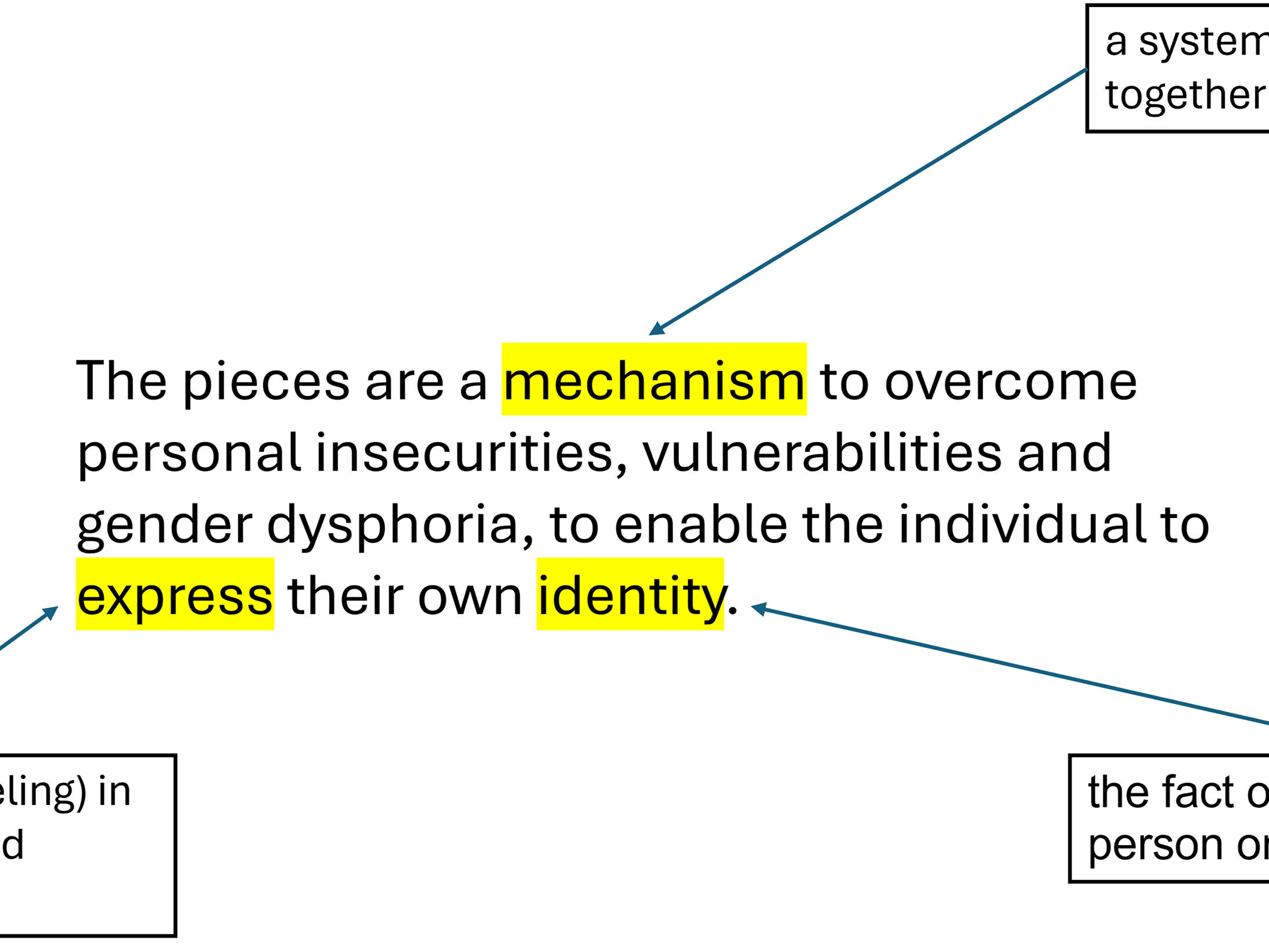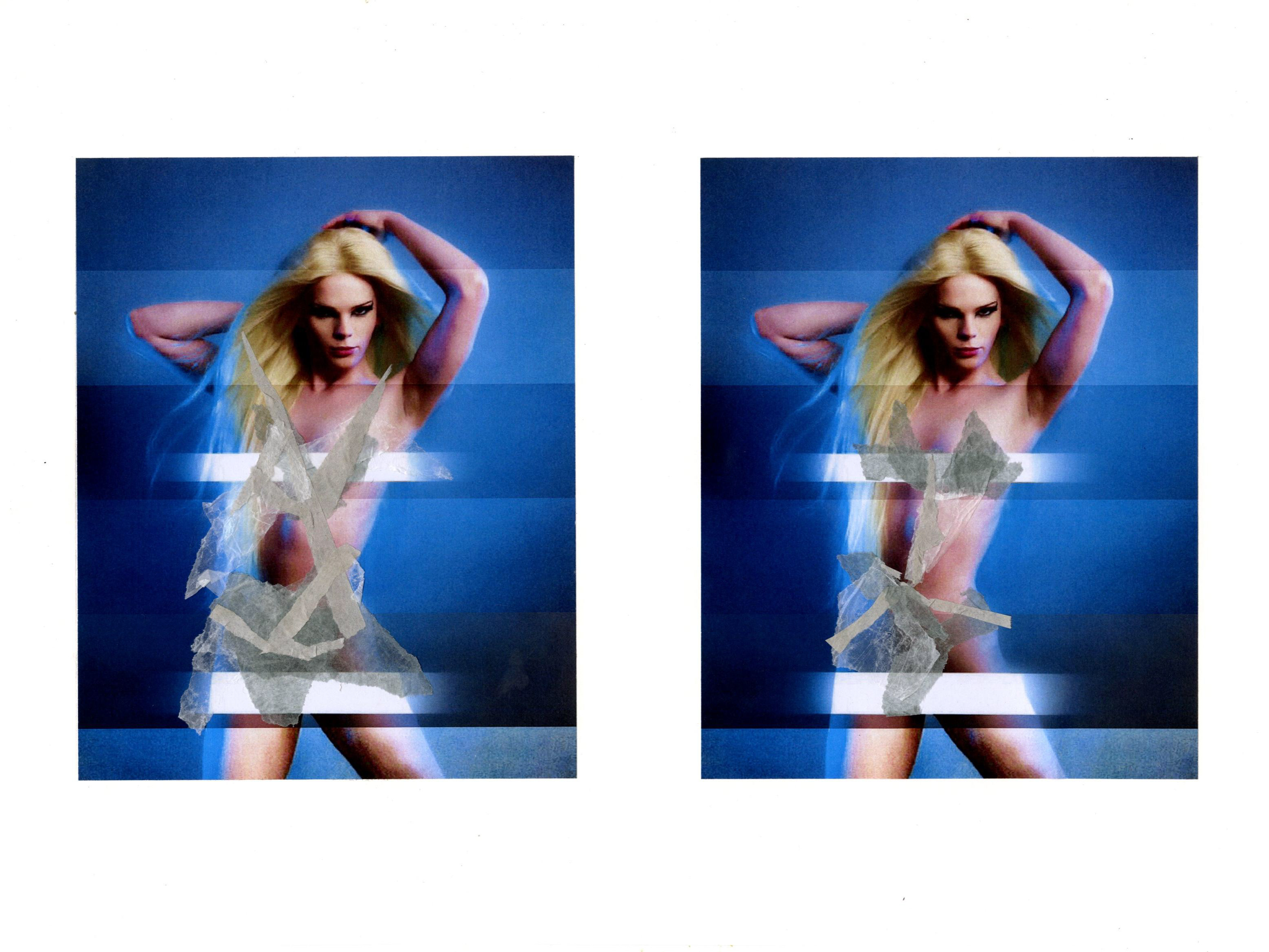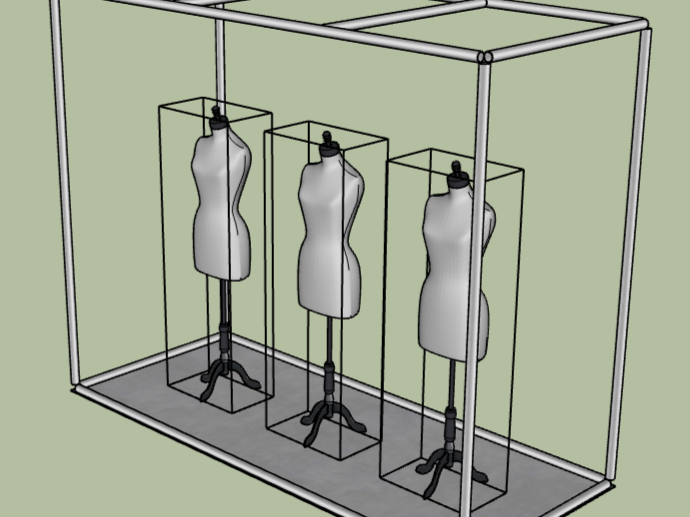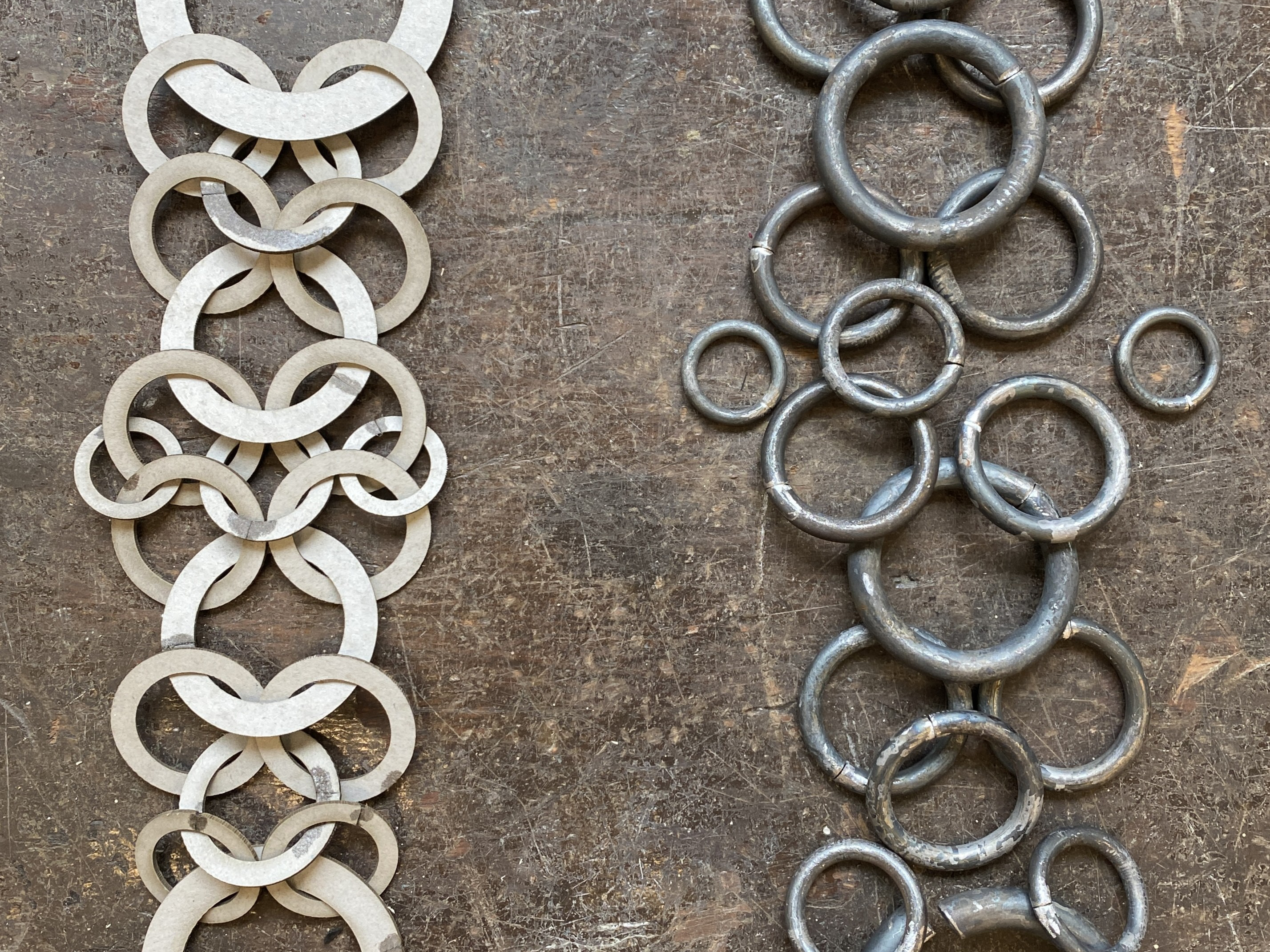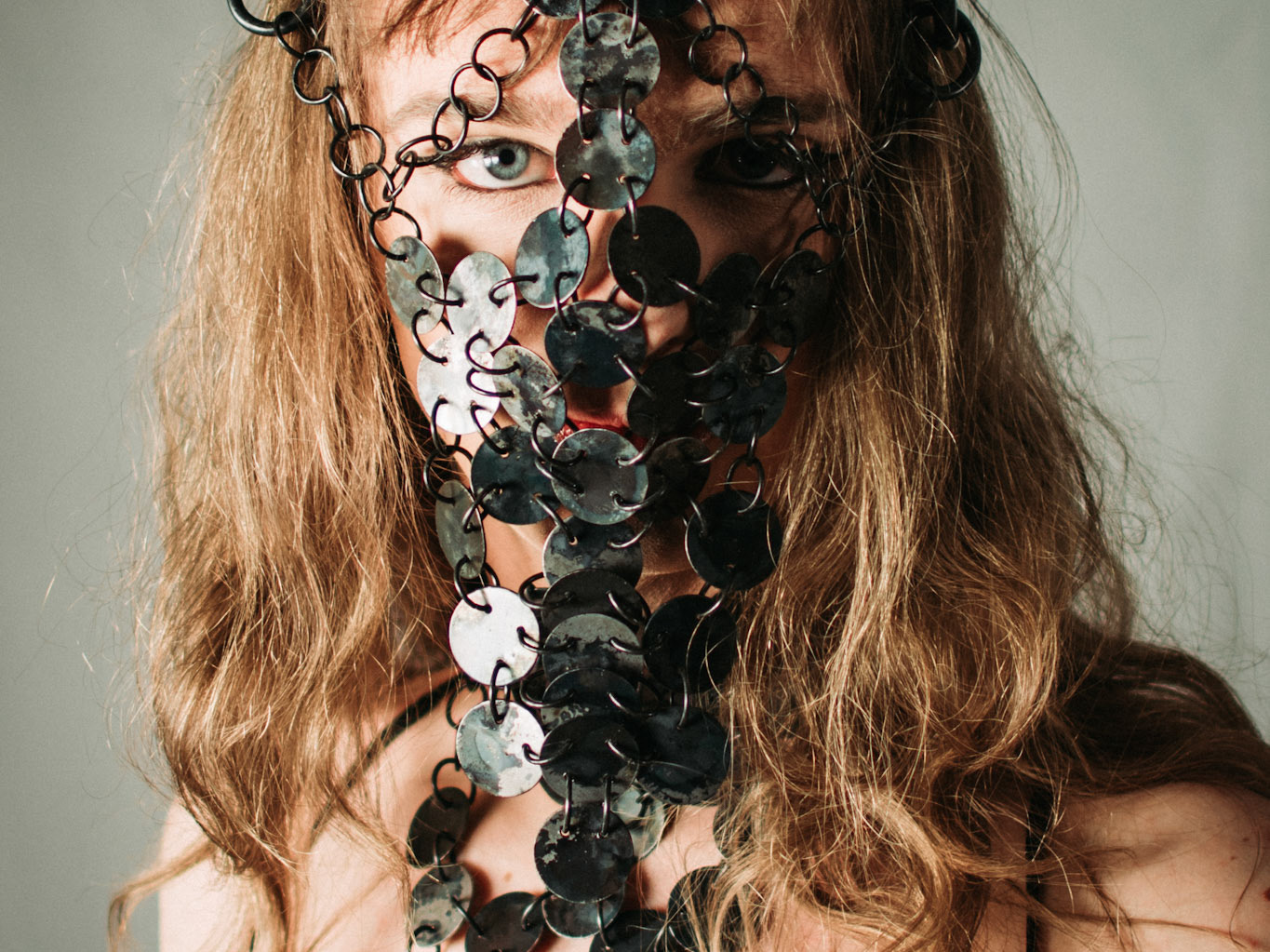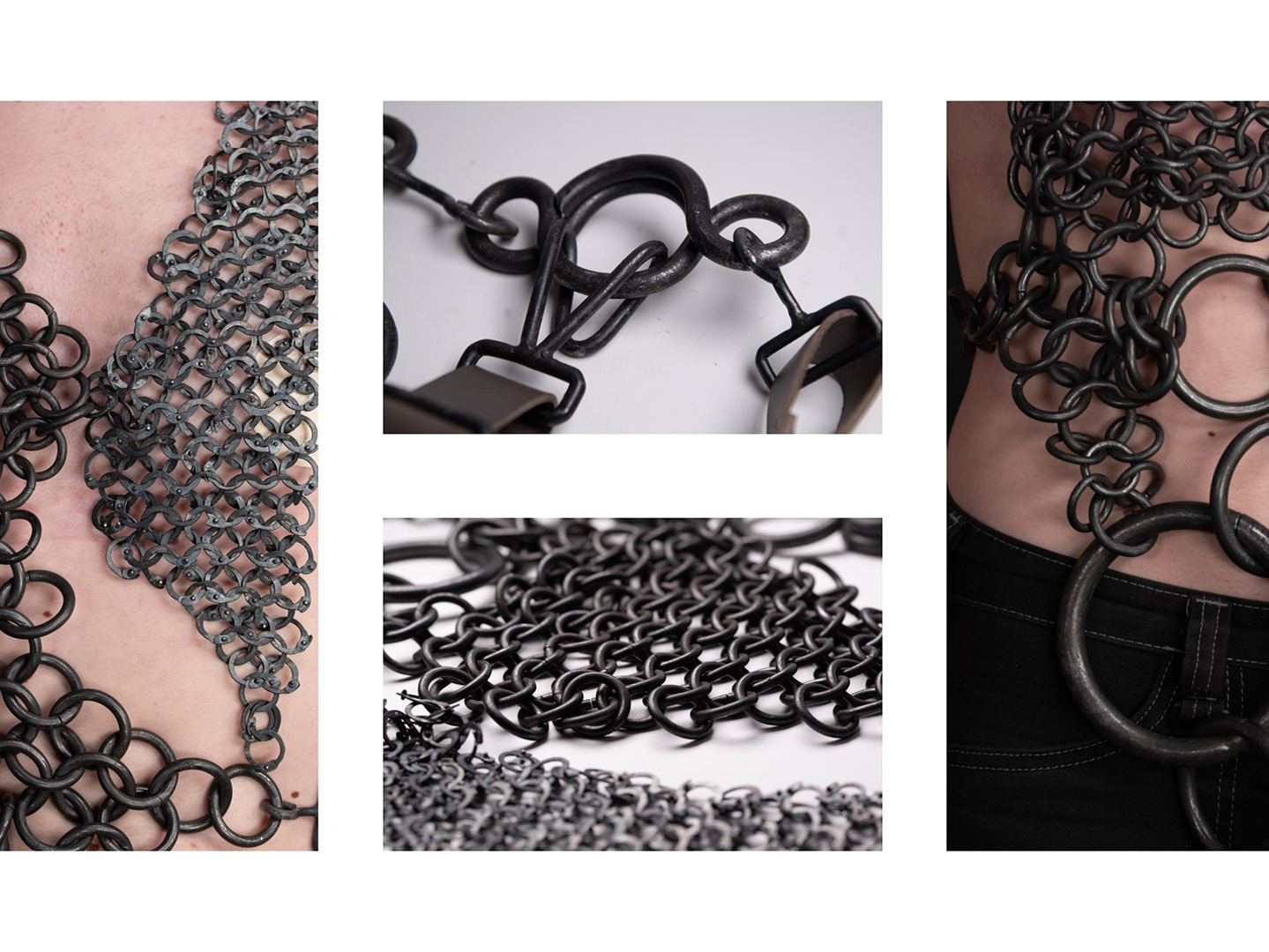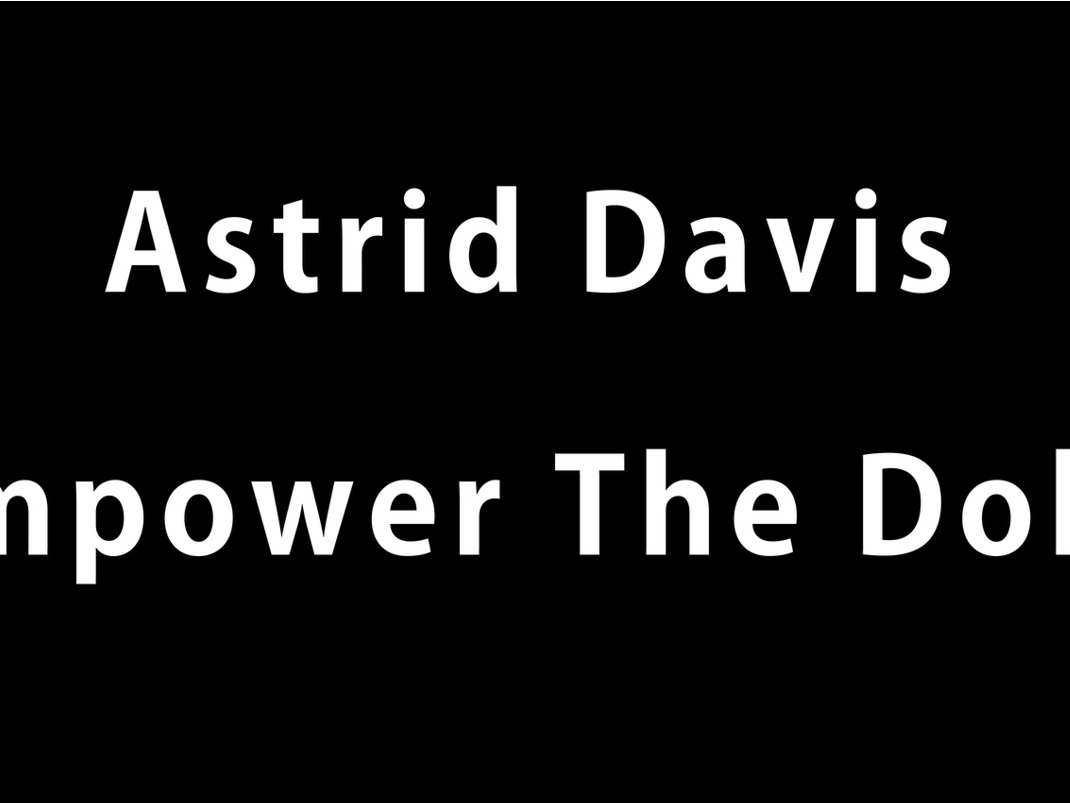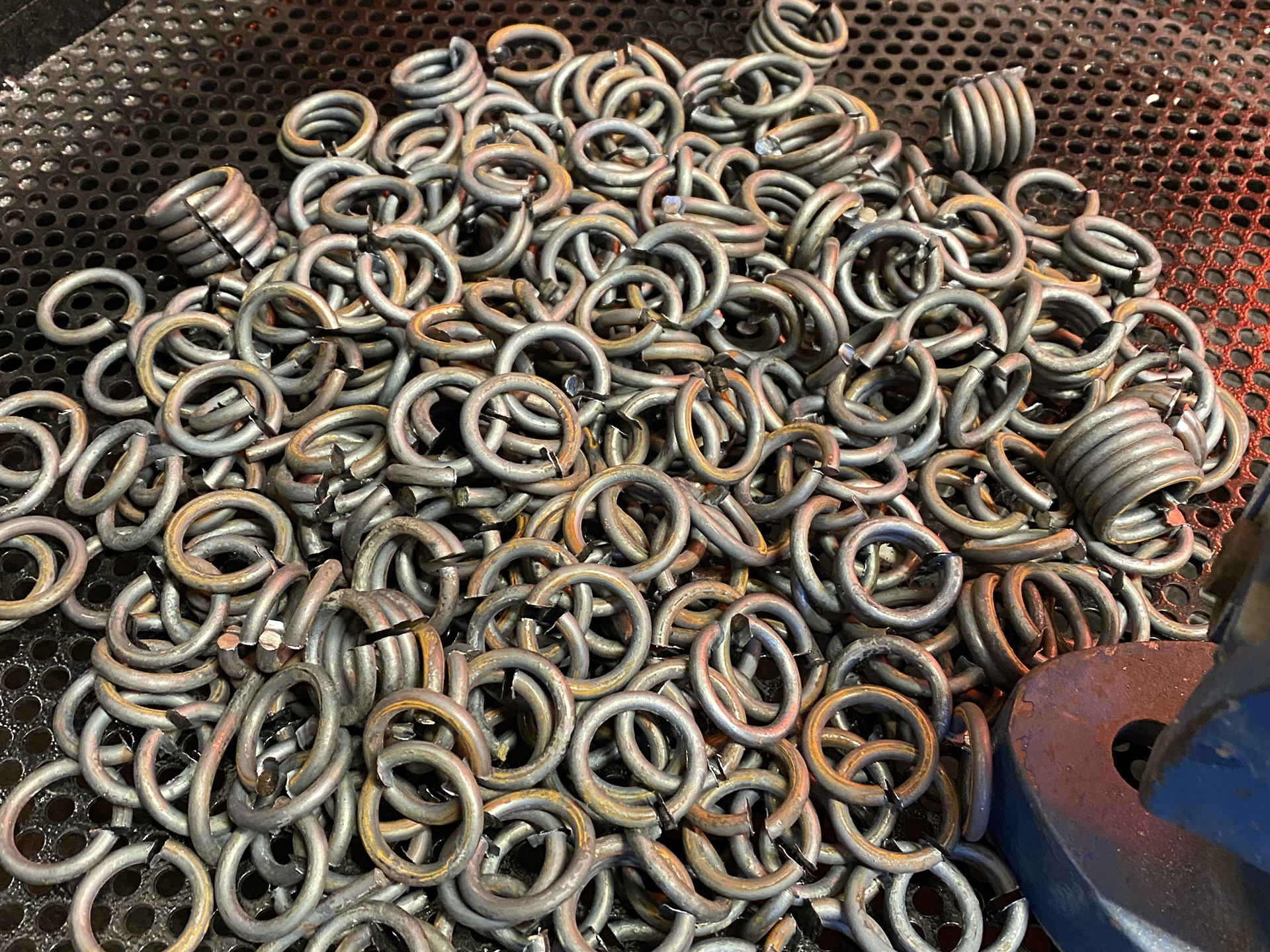During my gallery visits, I focused on gathering a range of inspiration from historical protective elements designed for the areas of the body I aimed to address. I explored the varying forms and the techniques used to provide defense.
Pitt Rivers Oxford


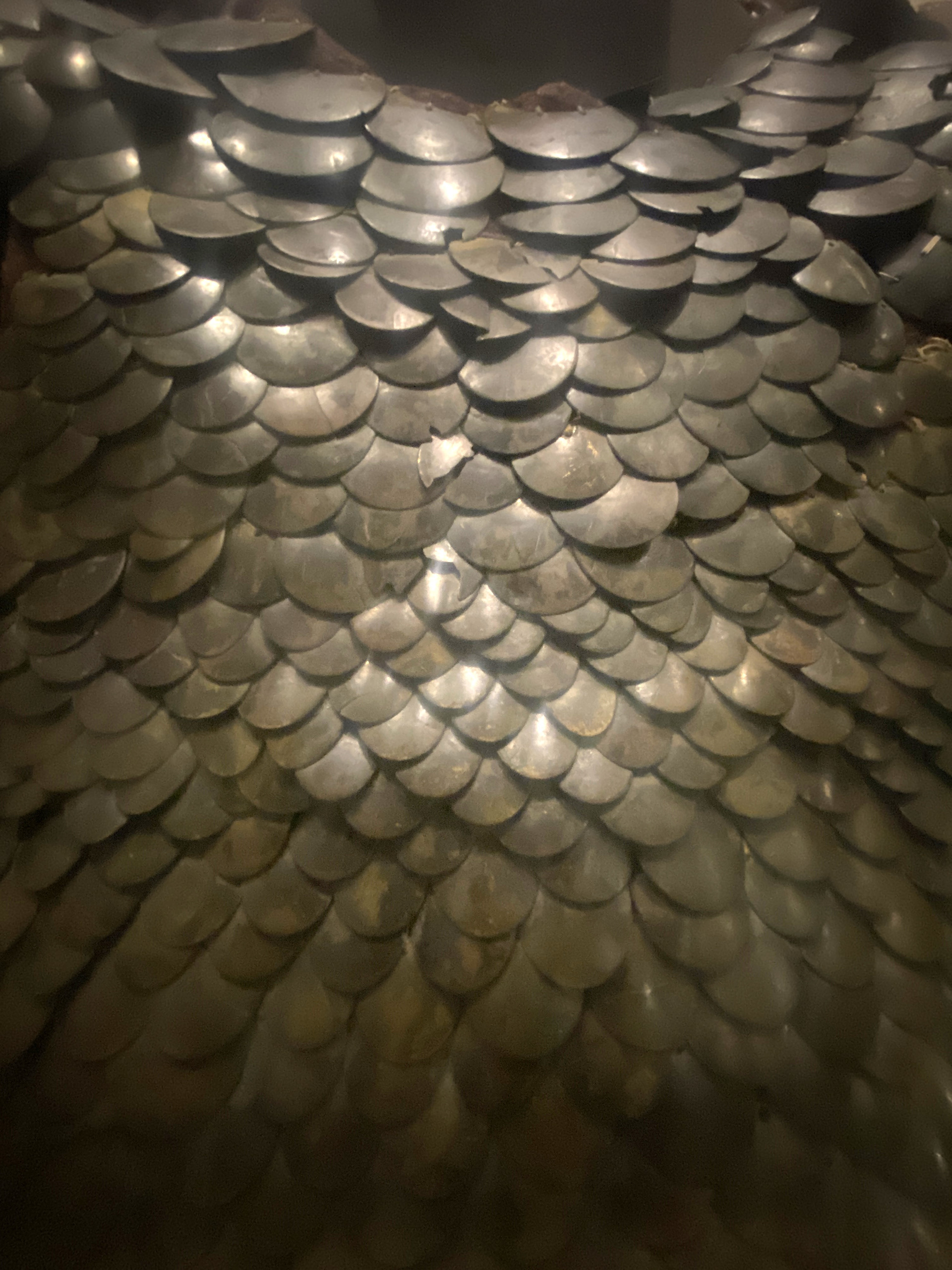


I was initially drawn to this piece because of the repeating yet unique patina of the brass scales. I also found the cascading size of the scales intriguing; I assume the smaller scales are placed to allow greater mobility around the torso. Finally, upon closer inspection, I discovered that the scales were attached to a thick undergarment using threads. This could be a technique I incorporate to create a dense, impenetrable defence in my own plate mail.

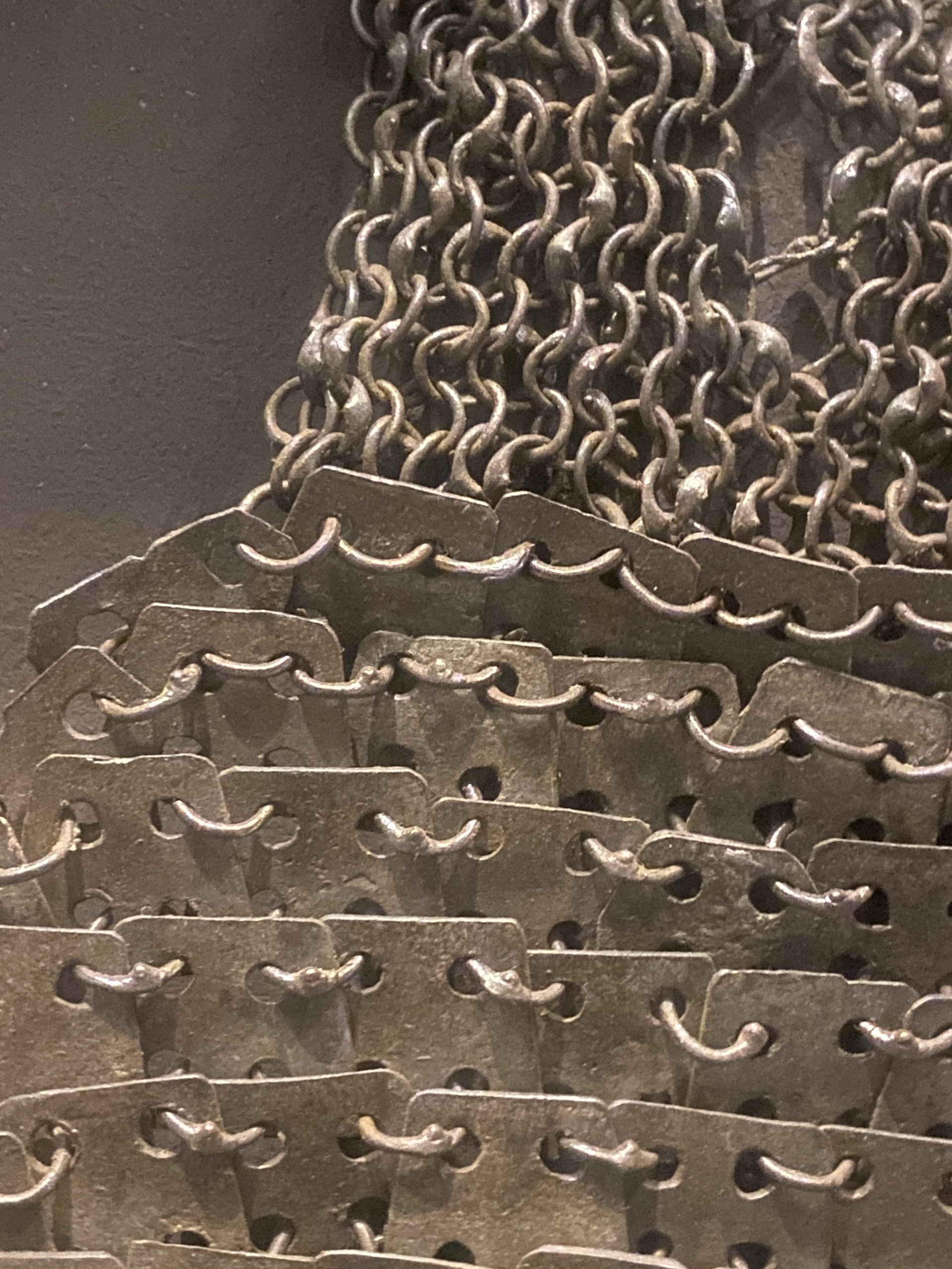
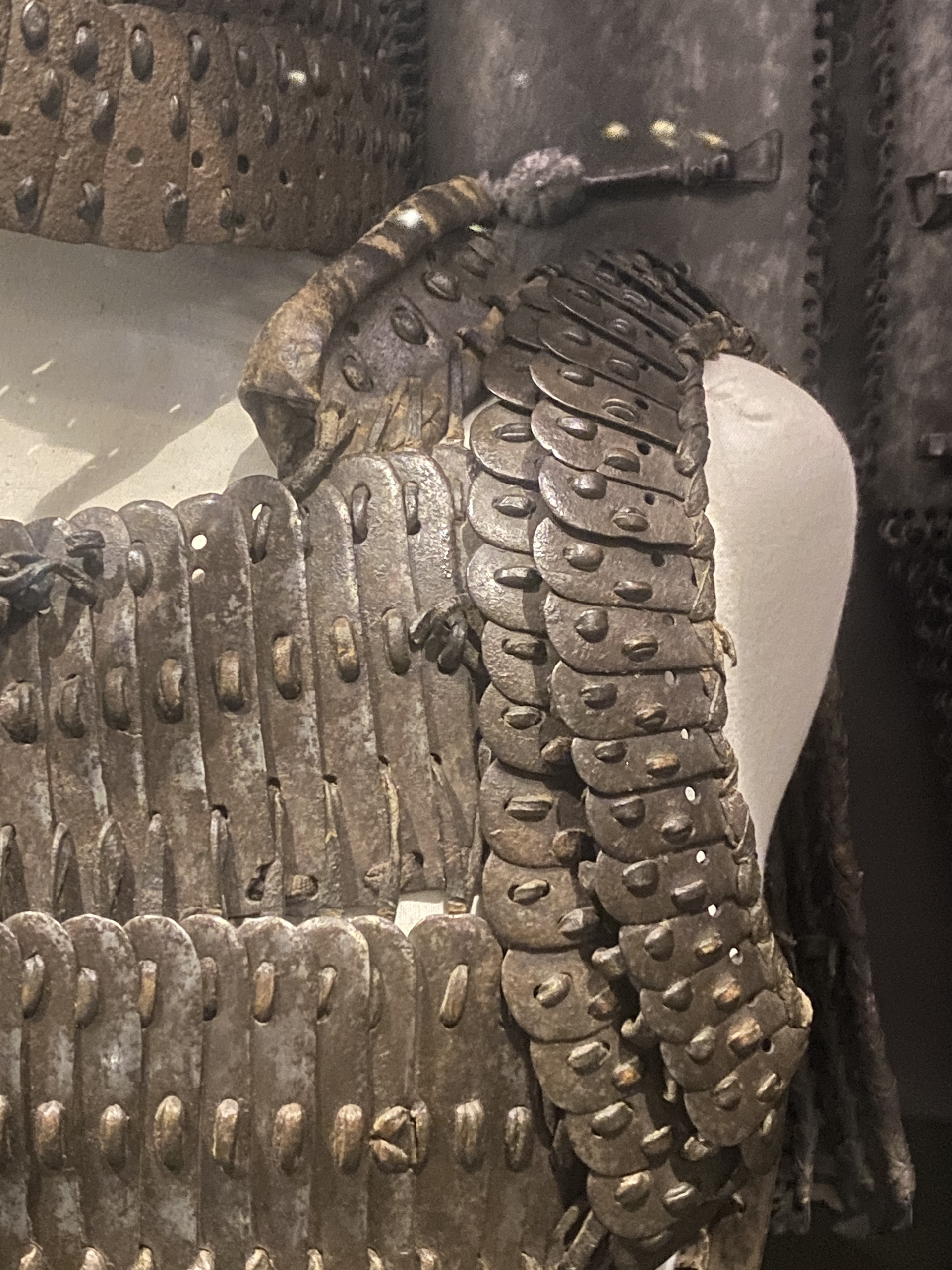
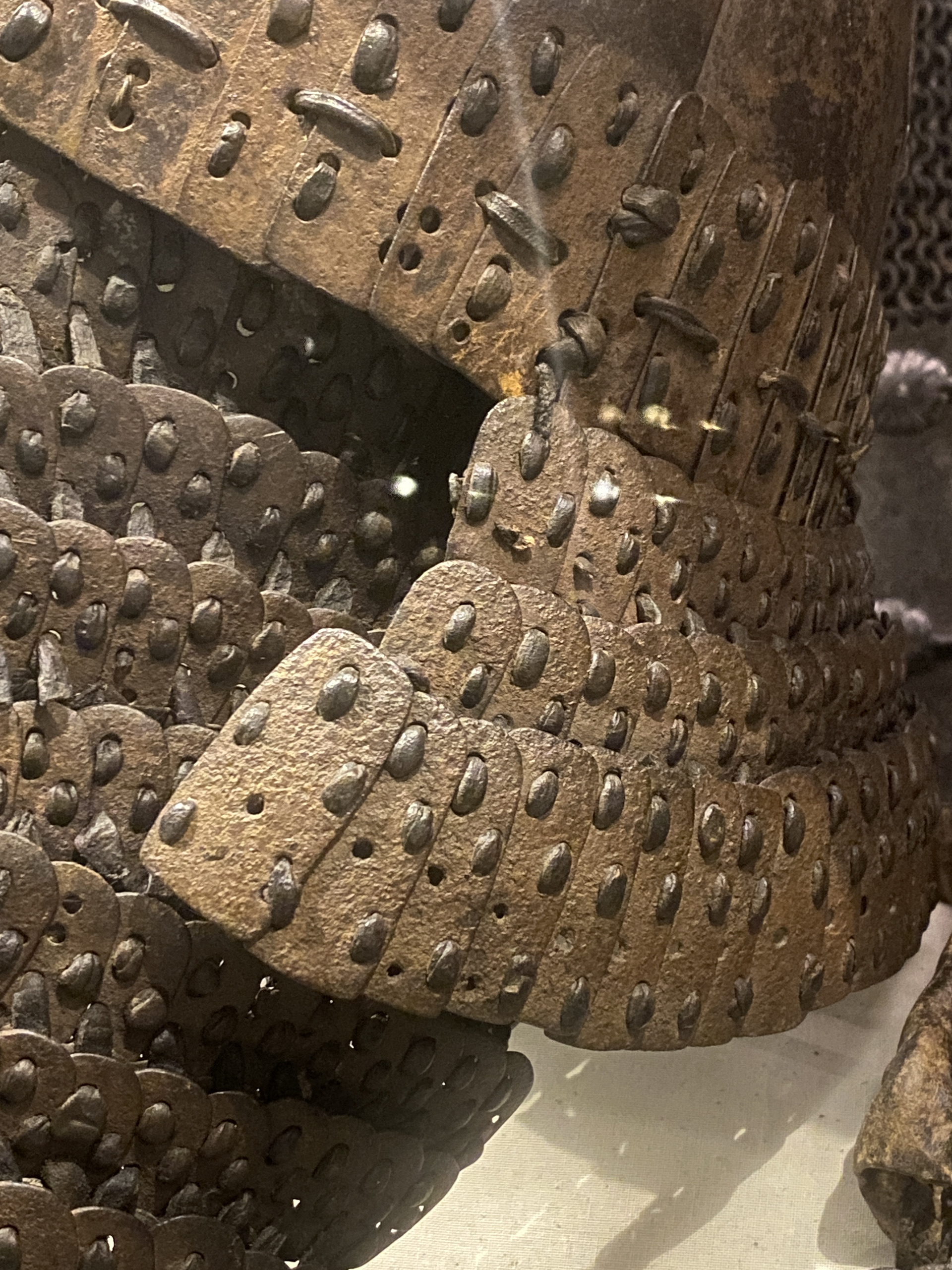
I studied these pieces to gain a deeper understanding of the different construction techniques used in plate mail. There are two primary methods of joining the plates: using iron jump rings and leather strips. I discovered that larger holes were used for the jump rings than I have previously experimented with, likely creating a more flexible structure. Additionally, I found it interesting how the orientation of the plates was altered to better conform to the body.


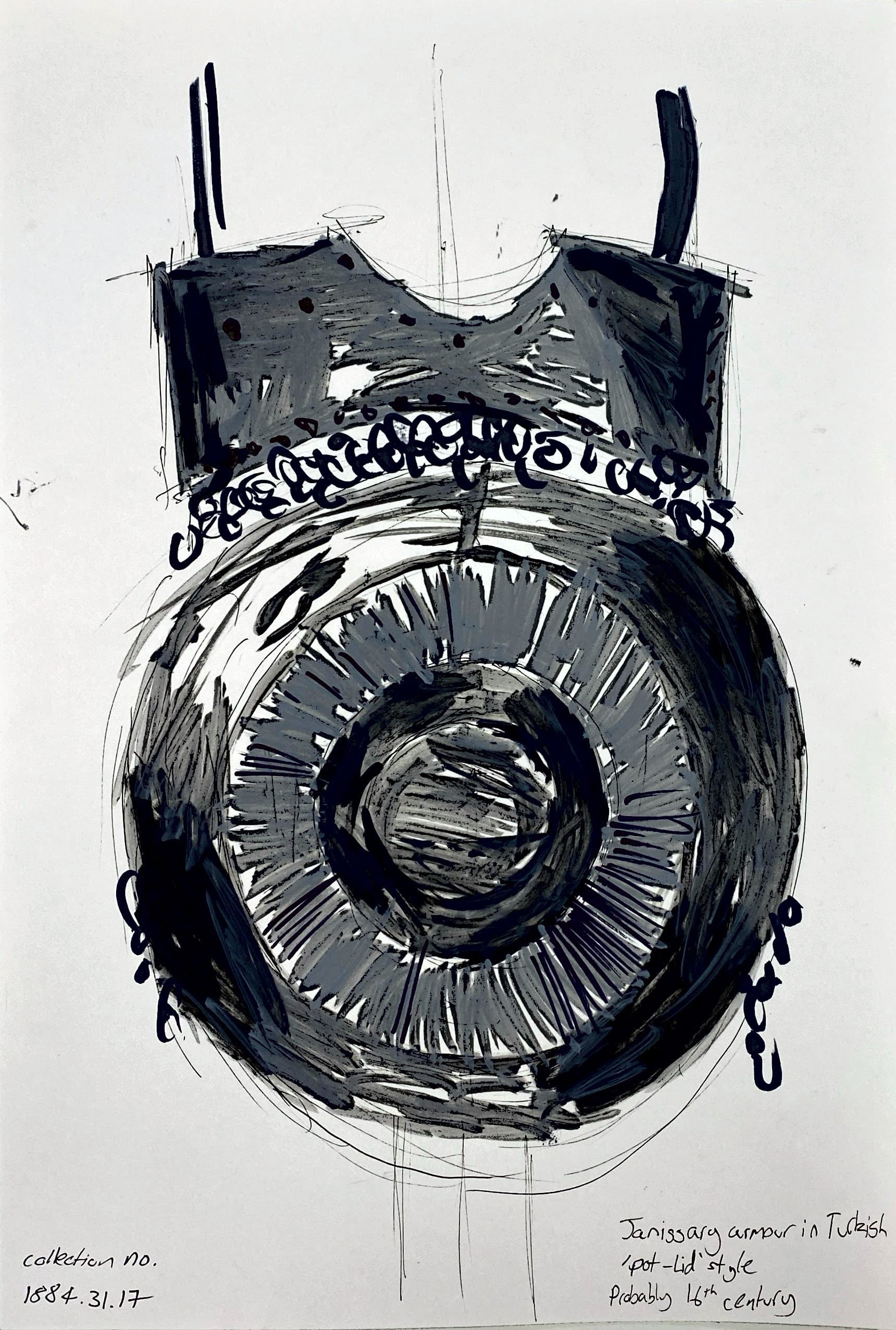
One element I hadn't encountered much during my previous trips was the alteration and customization of chain mail using leather straps to pull the mail together. Exploring ways to directly modify and manipulate the structure of the mail could enhance the weaves in my own work.
Another technique I hadn't seen before was the shaping of individual sheets of plate mail, allowing the piece to conform more effectively to the body.
Finally, I was drawn to the piece on the right due to its repeating and expanding circular forms. The explosive energy guided the viewer’s eye across the composition.

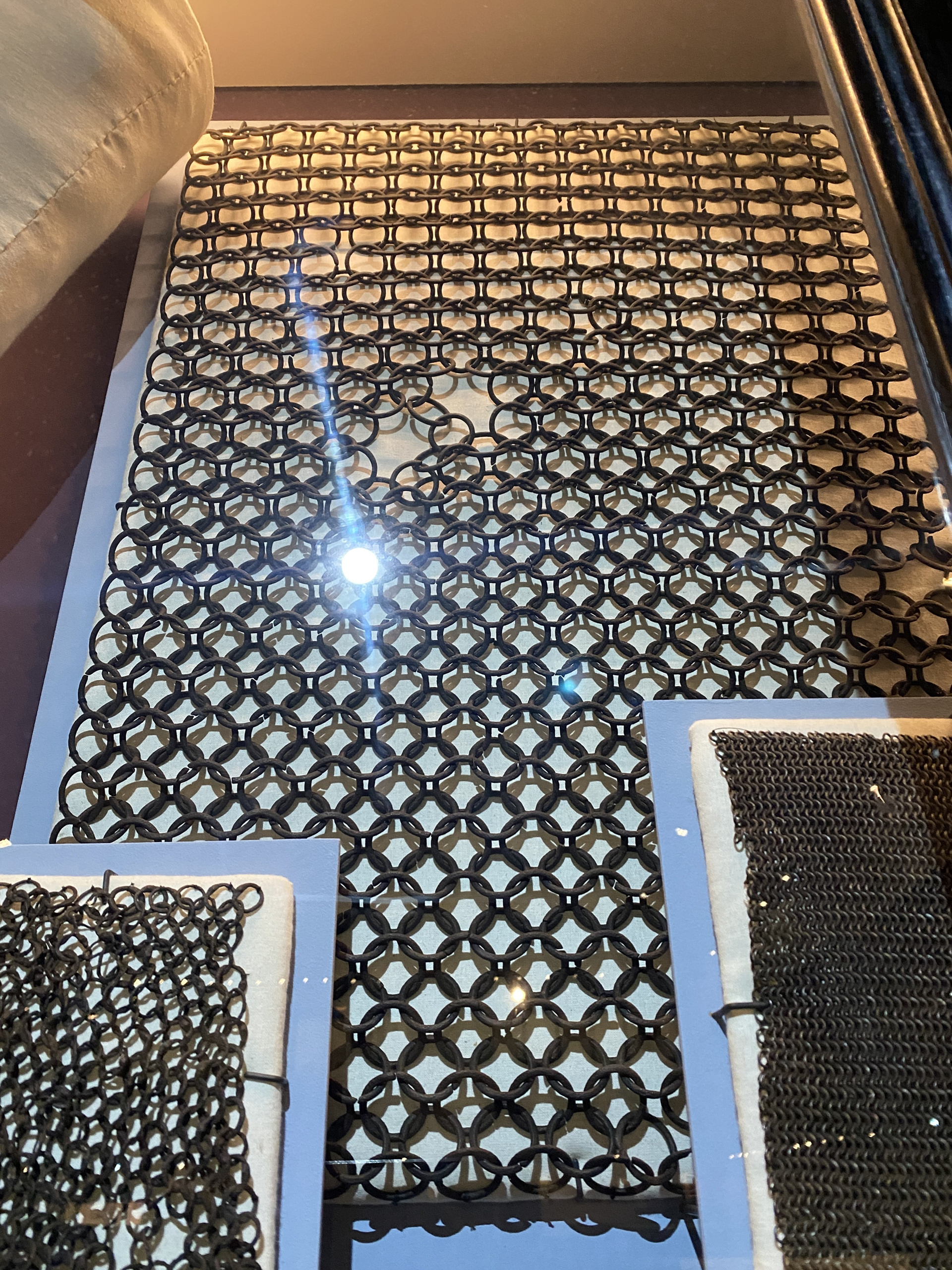
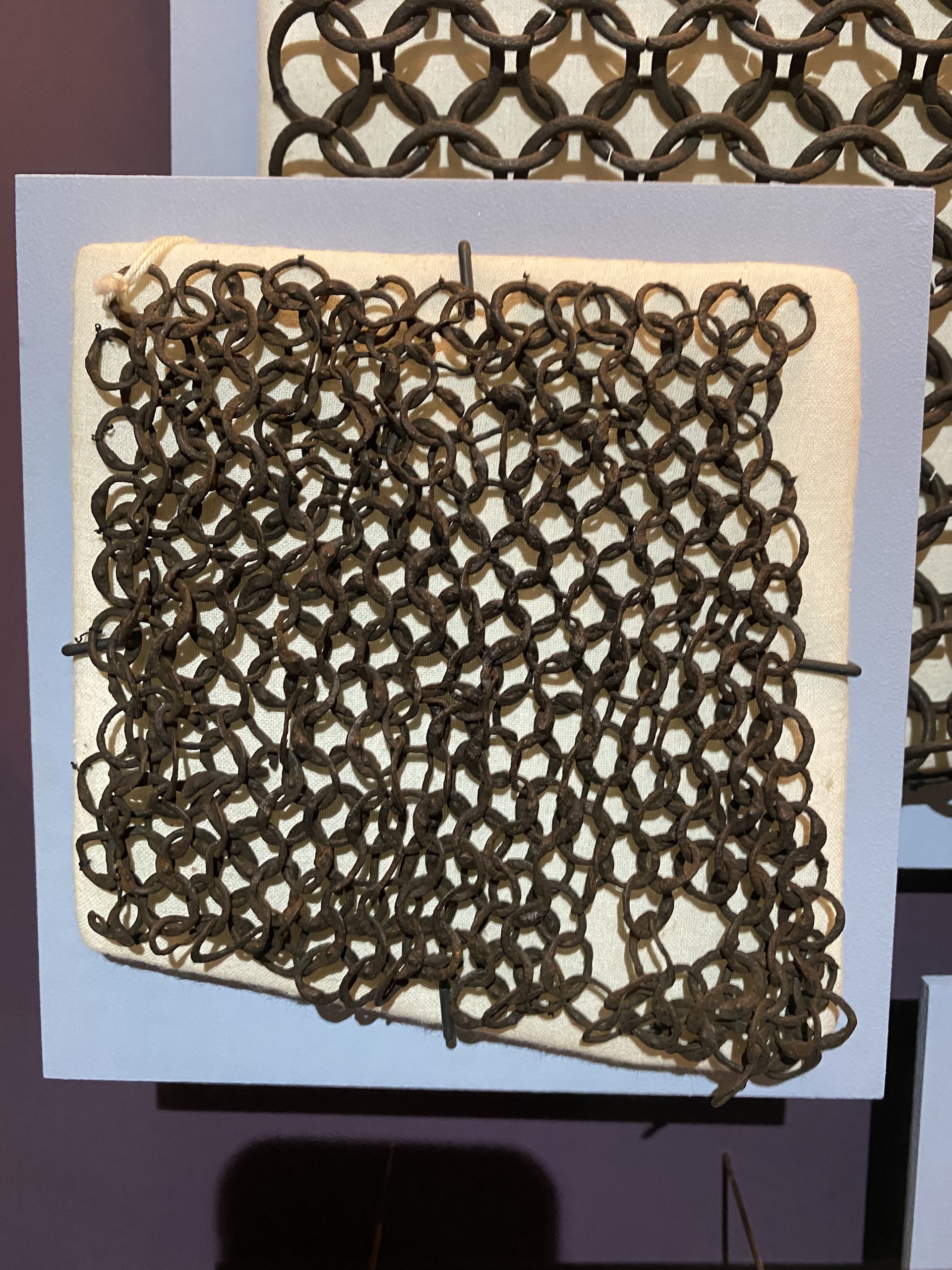
During the visit, I also learned about a different method of forming chain mail. The moulds shown on the left were used to cast solid links, enhancing the overall strength of the structure.
The display also featured examples of various types of mail. I found the holes and defects particularly intriguing, a disruption in the uniform pattern that drew my eye. I think incorporating gaps into my work could help direct the viewer’s attention
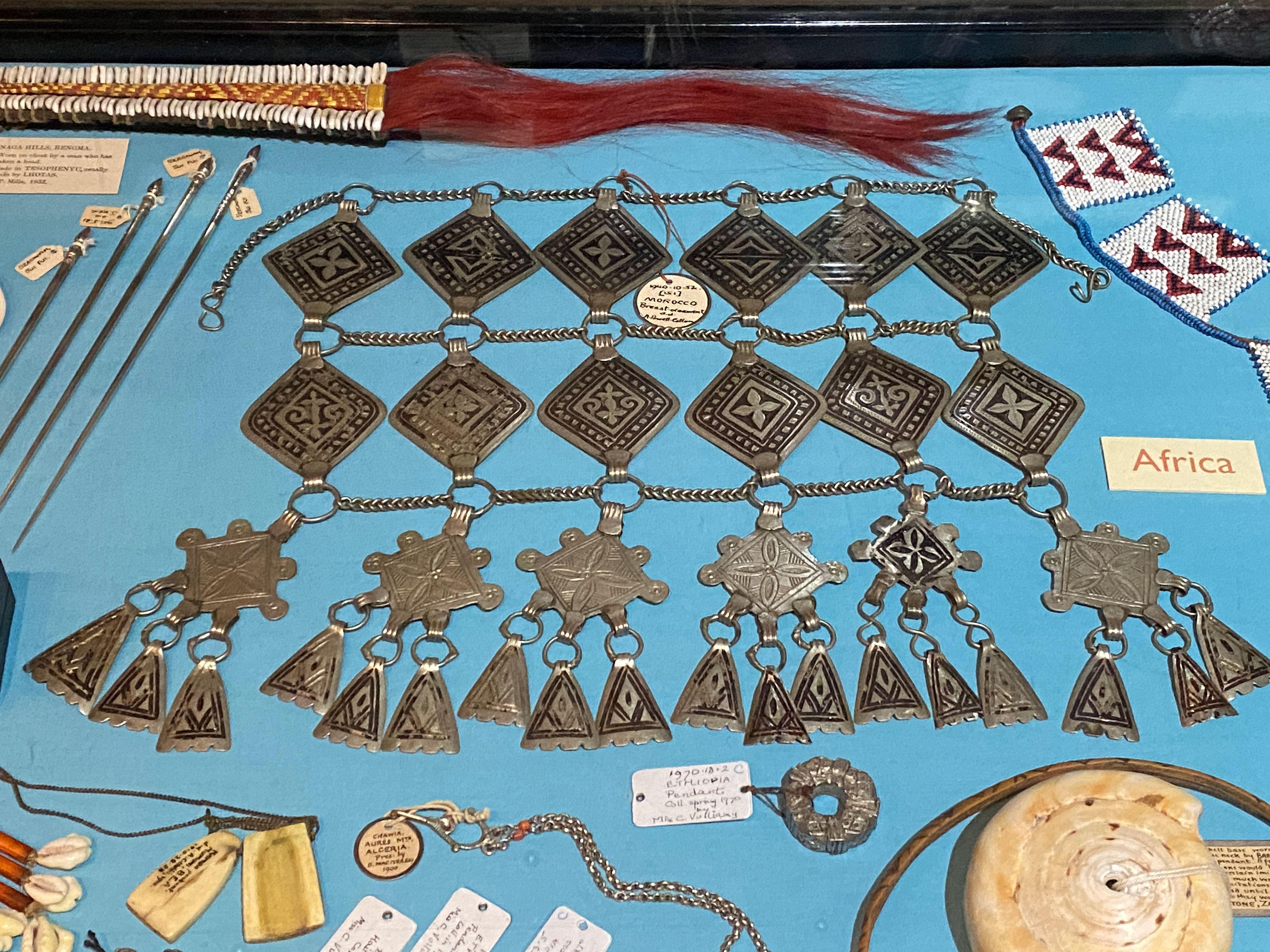
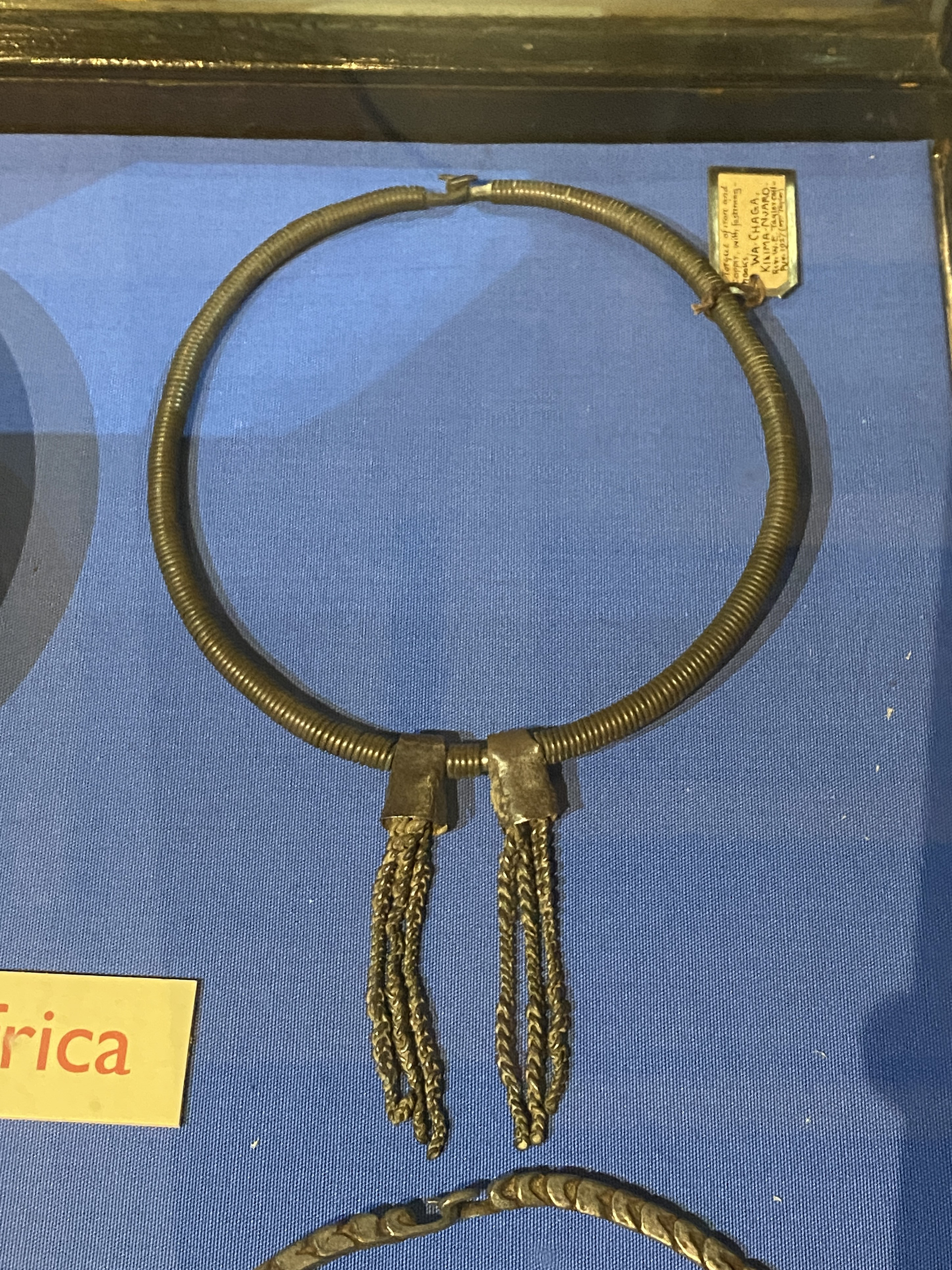
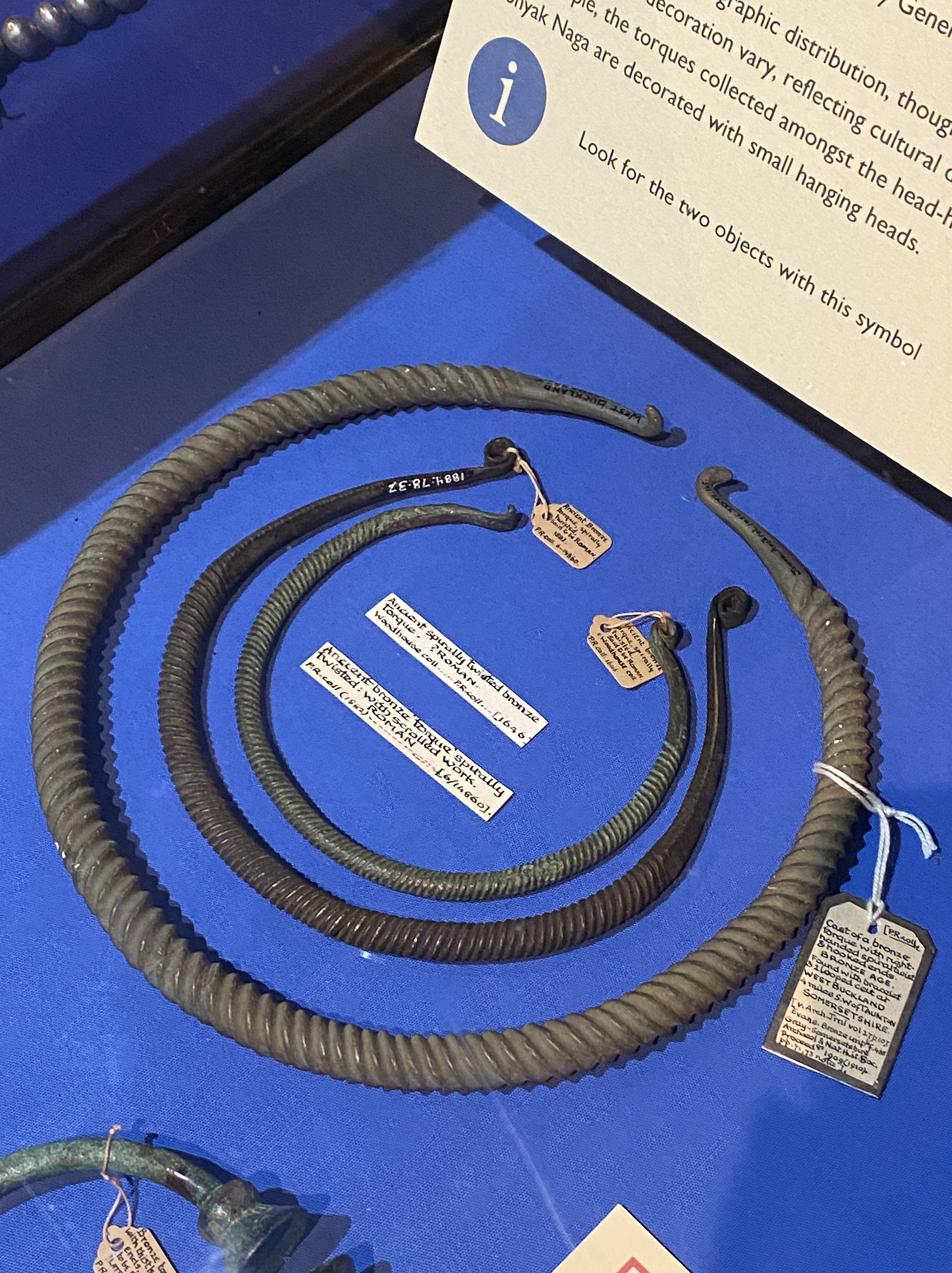



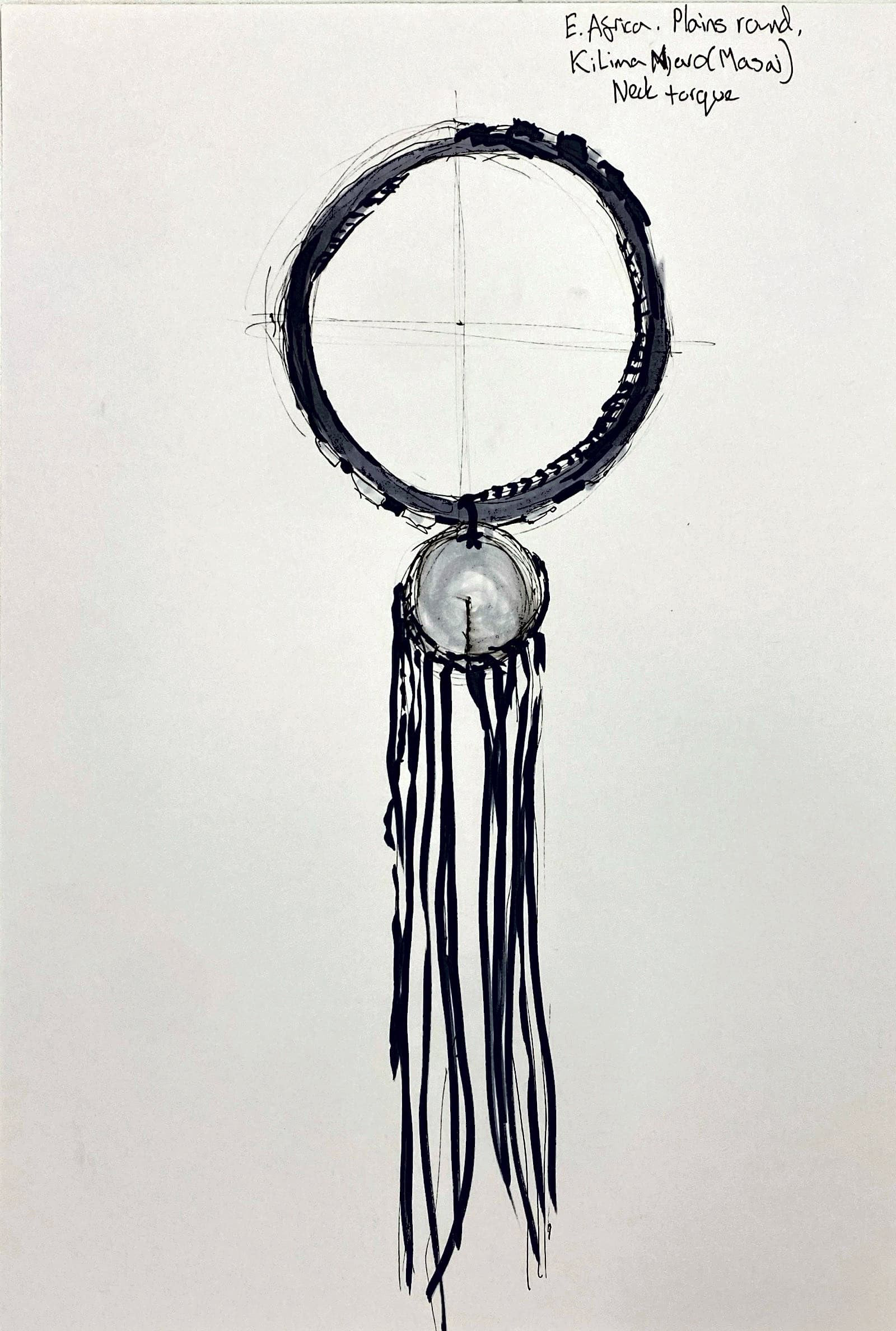

Whilst at the museum, I visited the jewellery section and focused my research on how different cultures and time periods used chain. I was inspired by the African use of chain and jump rings to connect decorative plates, forming large sheets that could flow and conform to the body's curves. I also liked the use of multiple sized links to create bold lines, paired with smaller blocks of fluid and delicate forms.
Royal Armoires Leeds
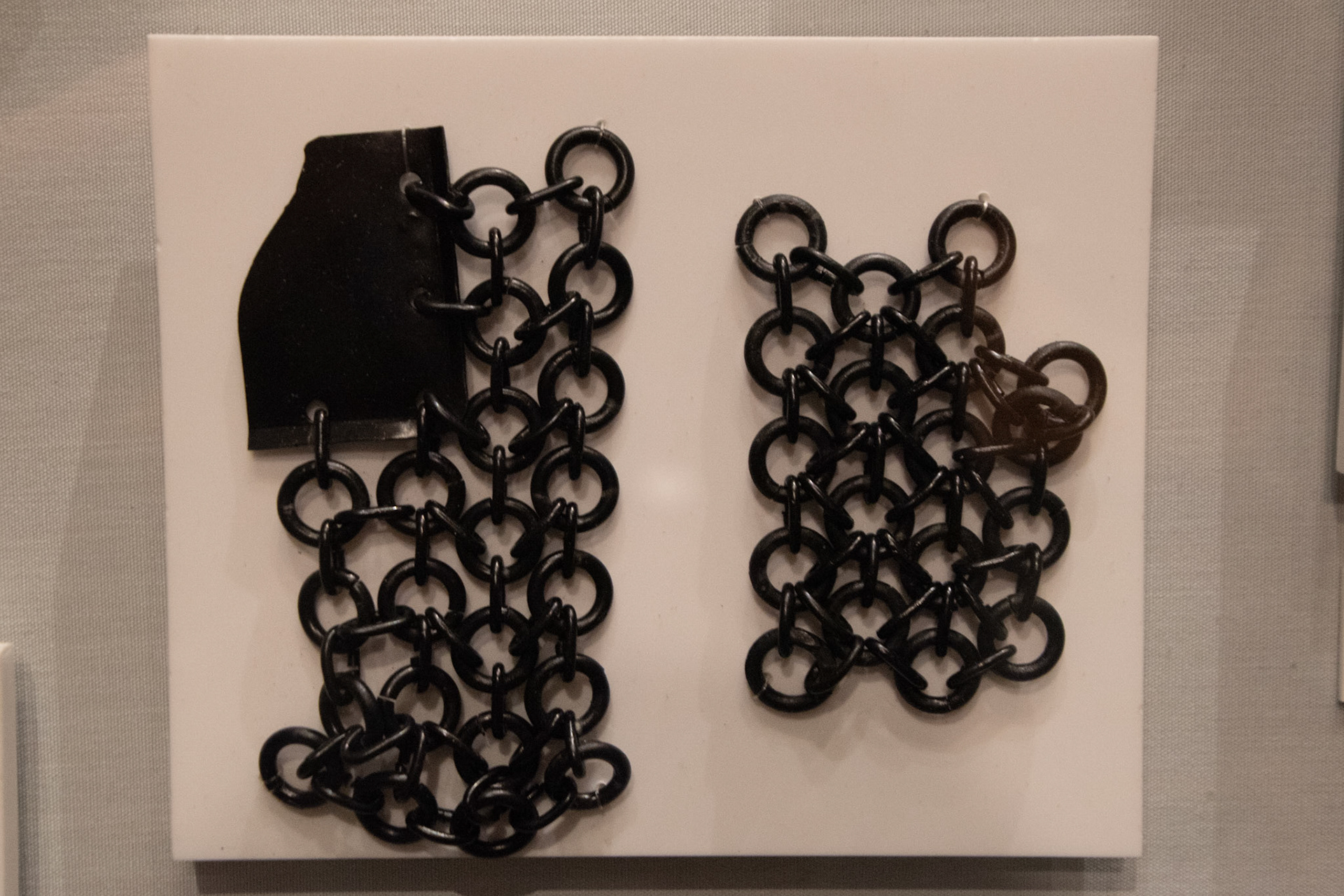
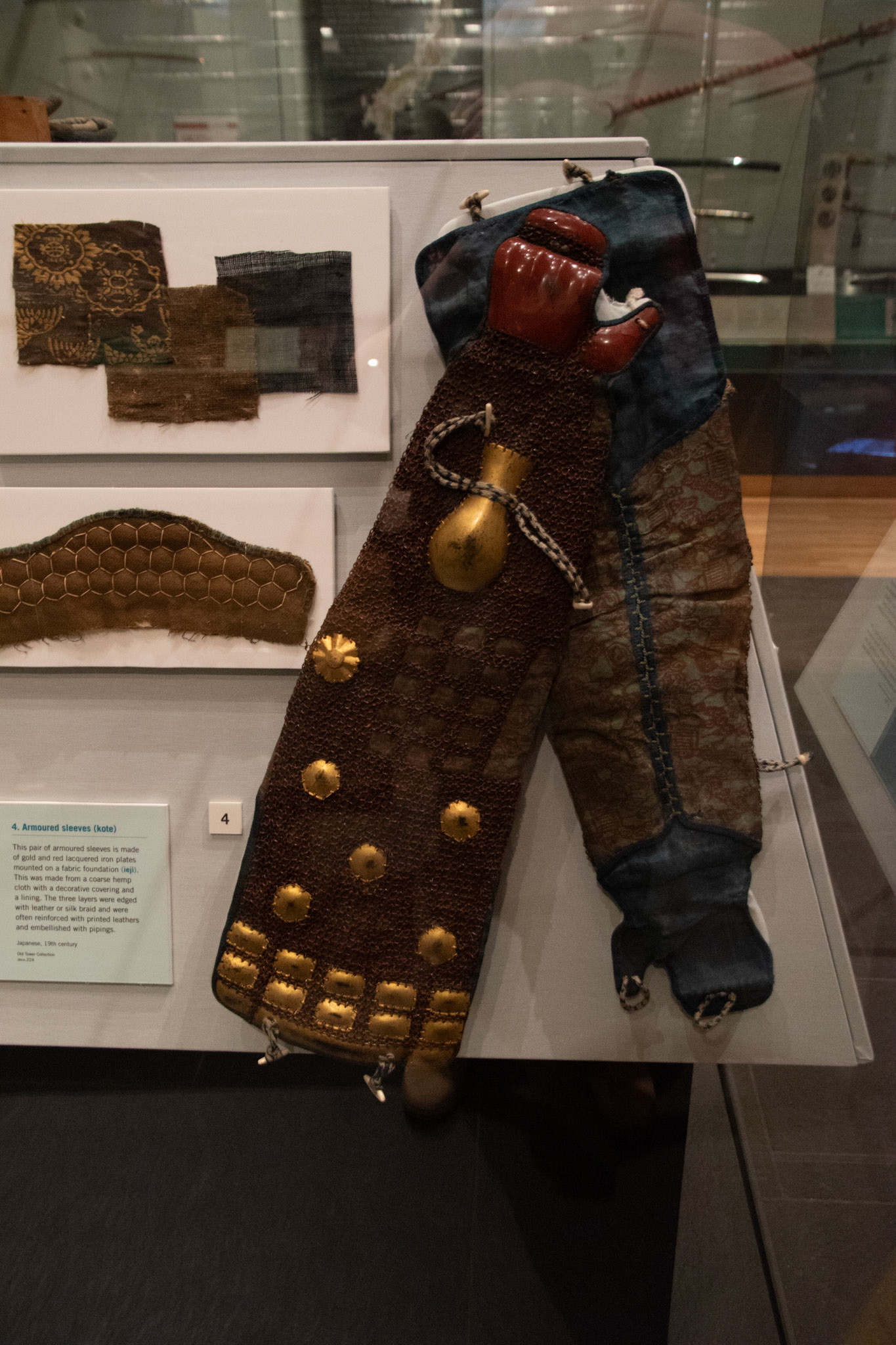
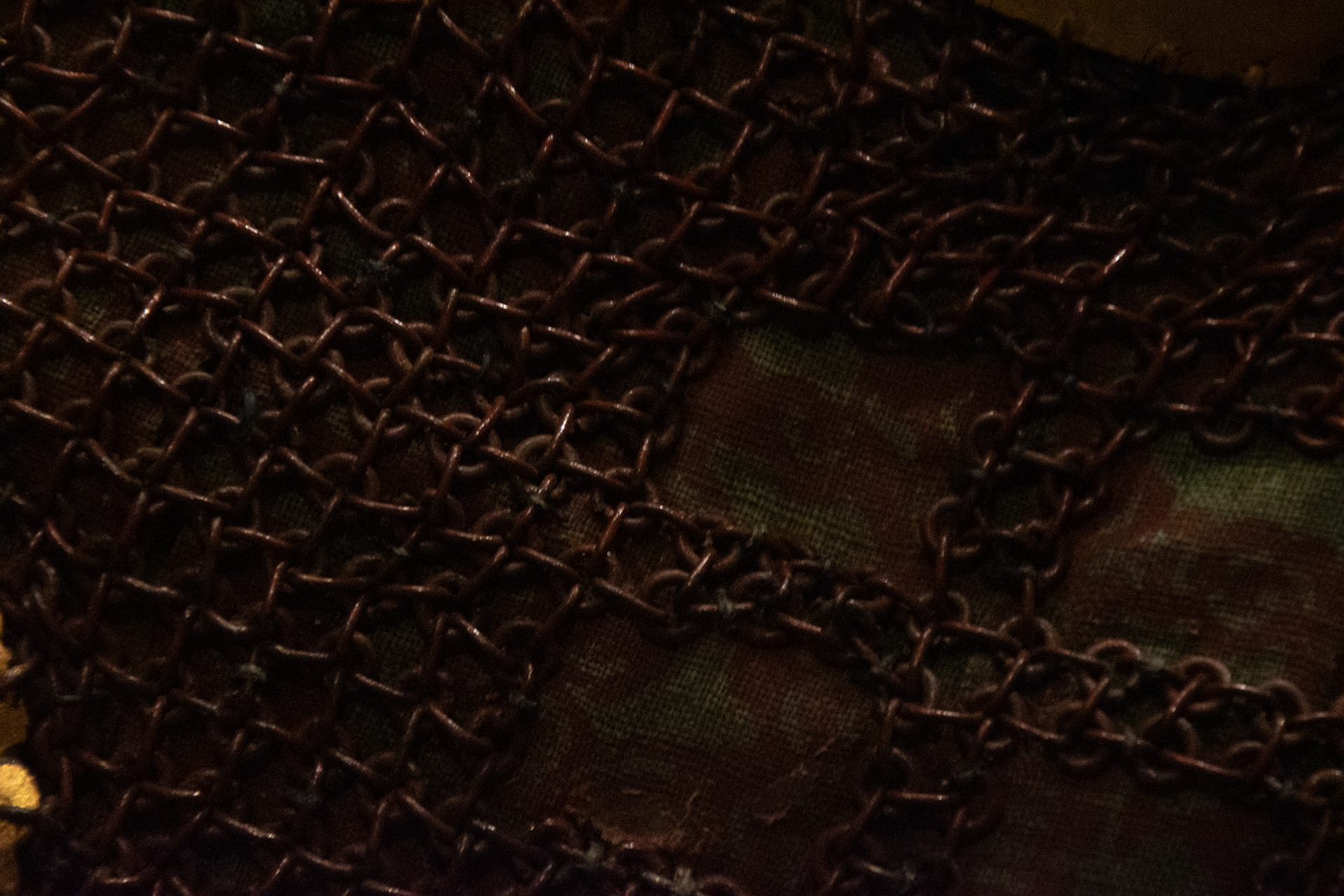
During the visit, I predominantly focused on European armour. However, I found the Japanese weaves intriguing. This pattern sat much flatter against the body, utilizing a 6-in-1 weave. I also appreciated how this mail linked directly to the undergarment, seamlessly blending protection with fashion.
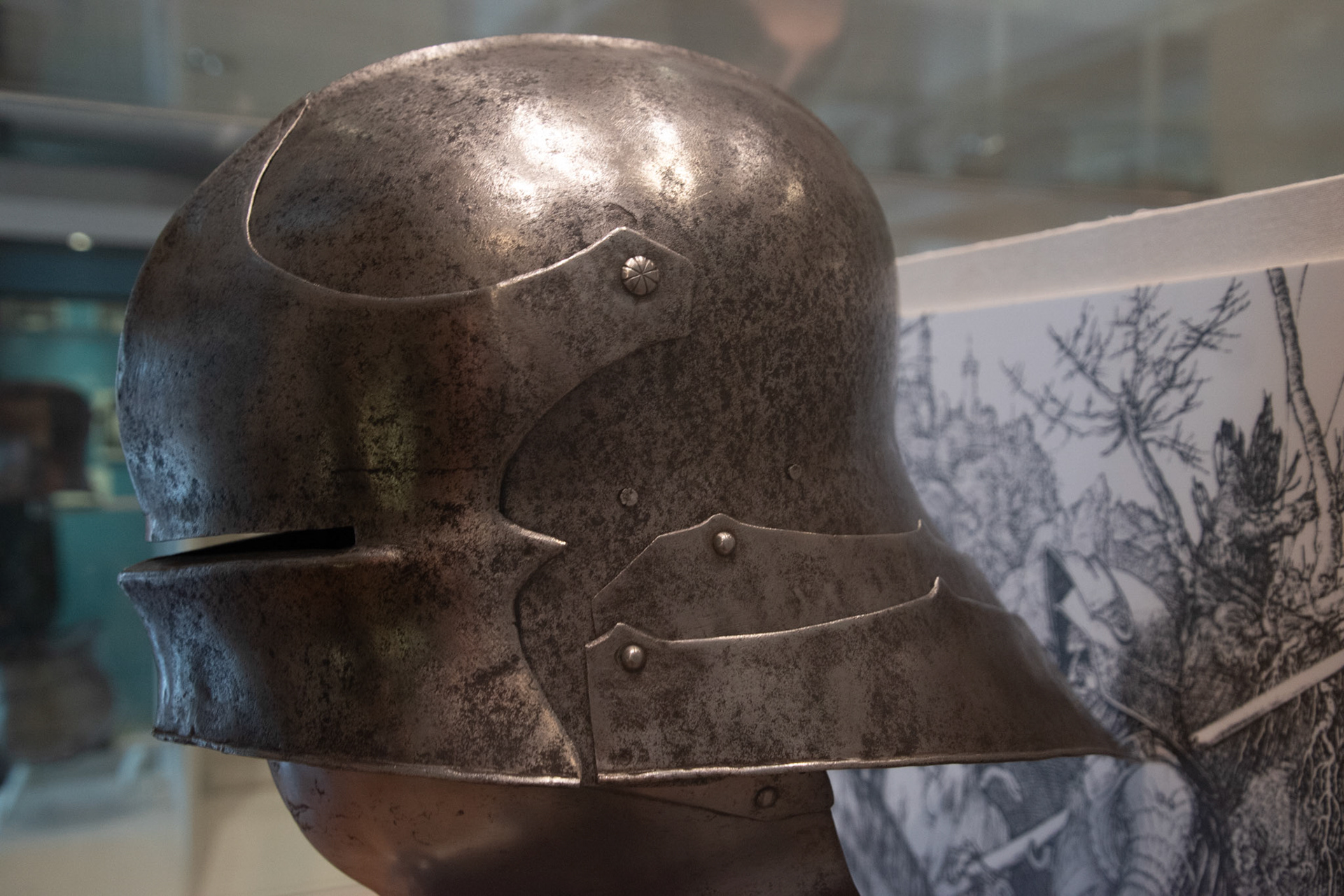
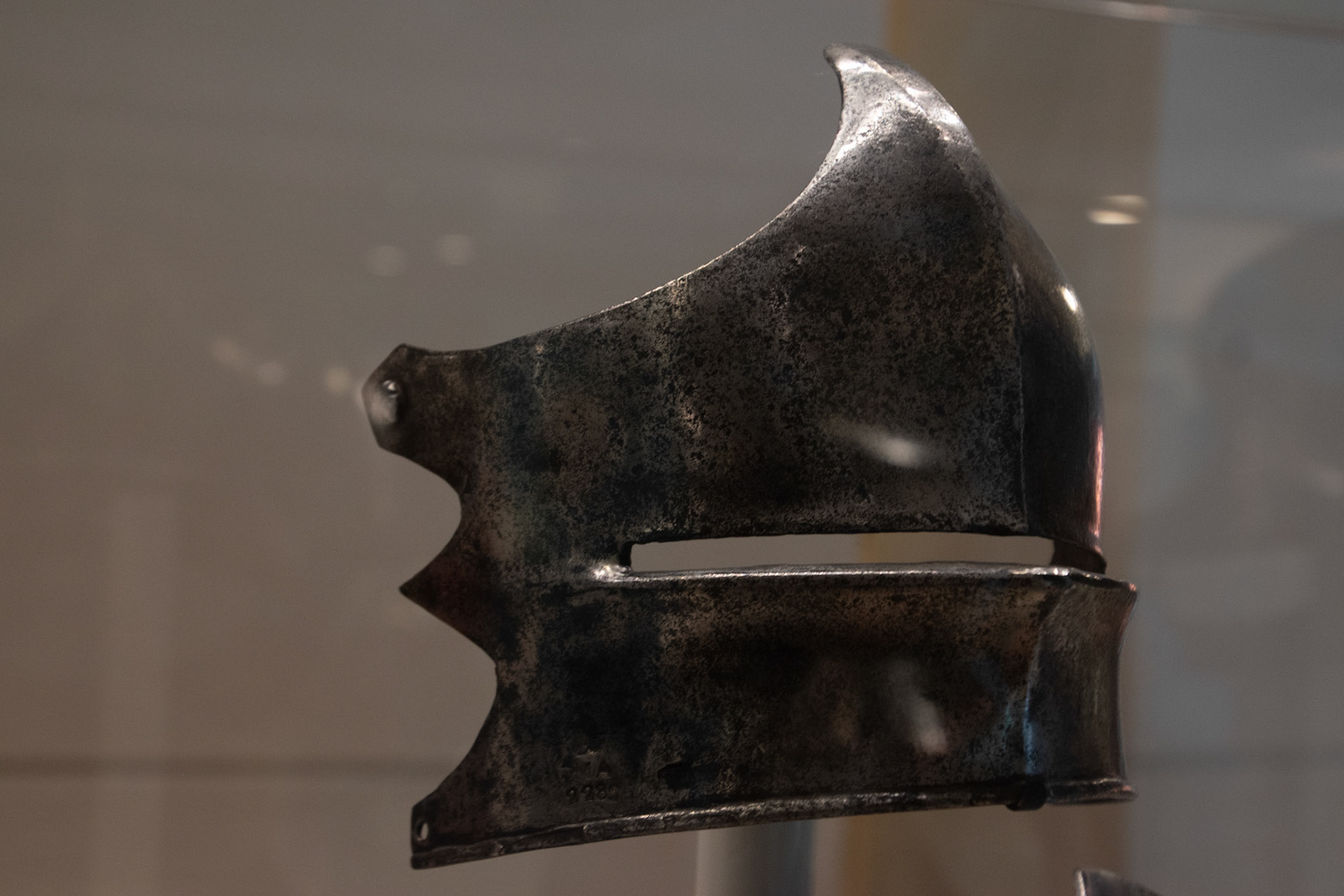


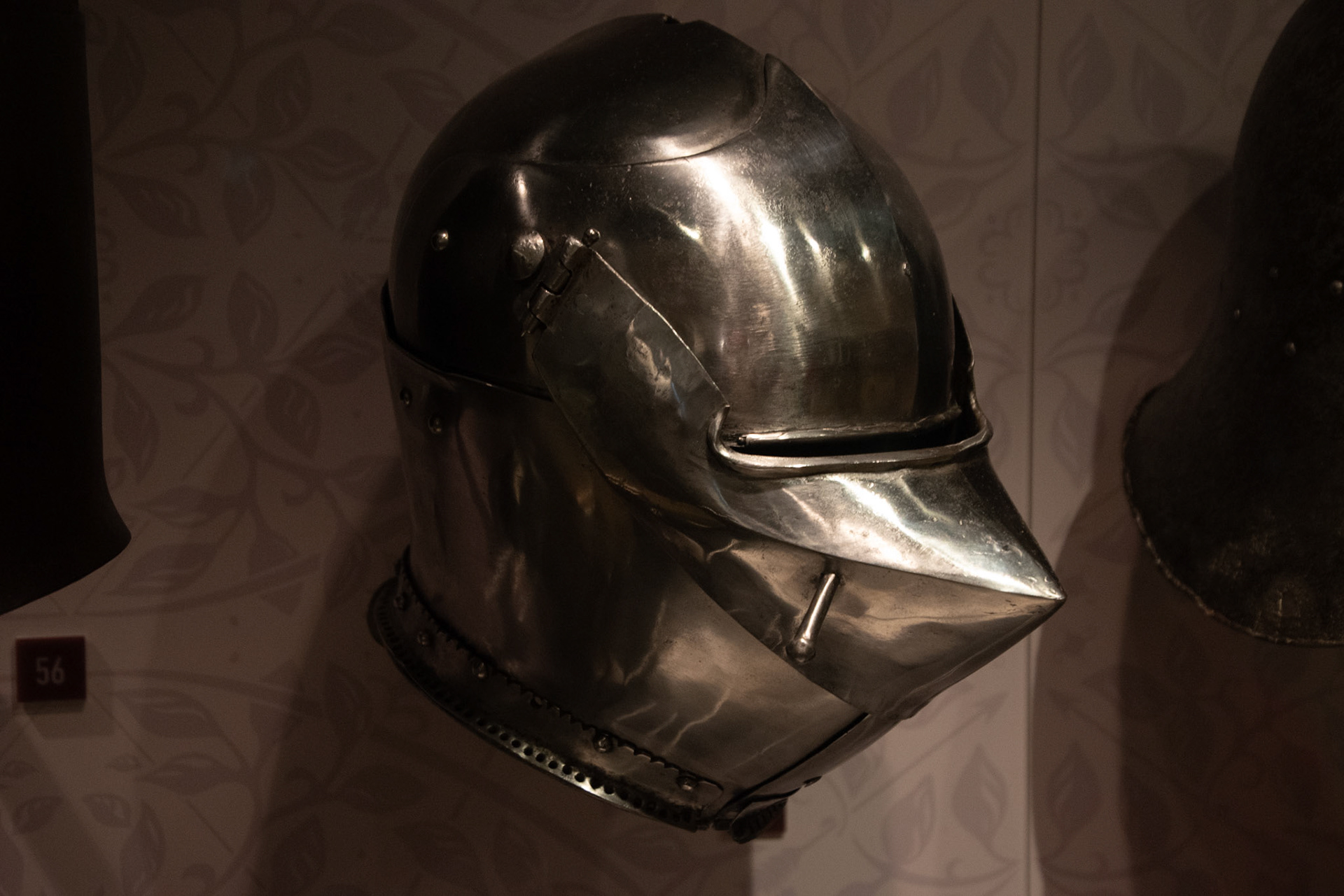
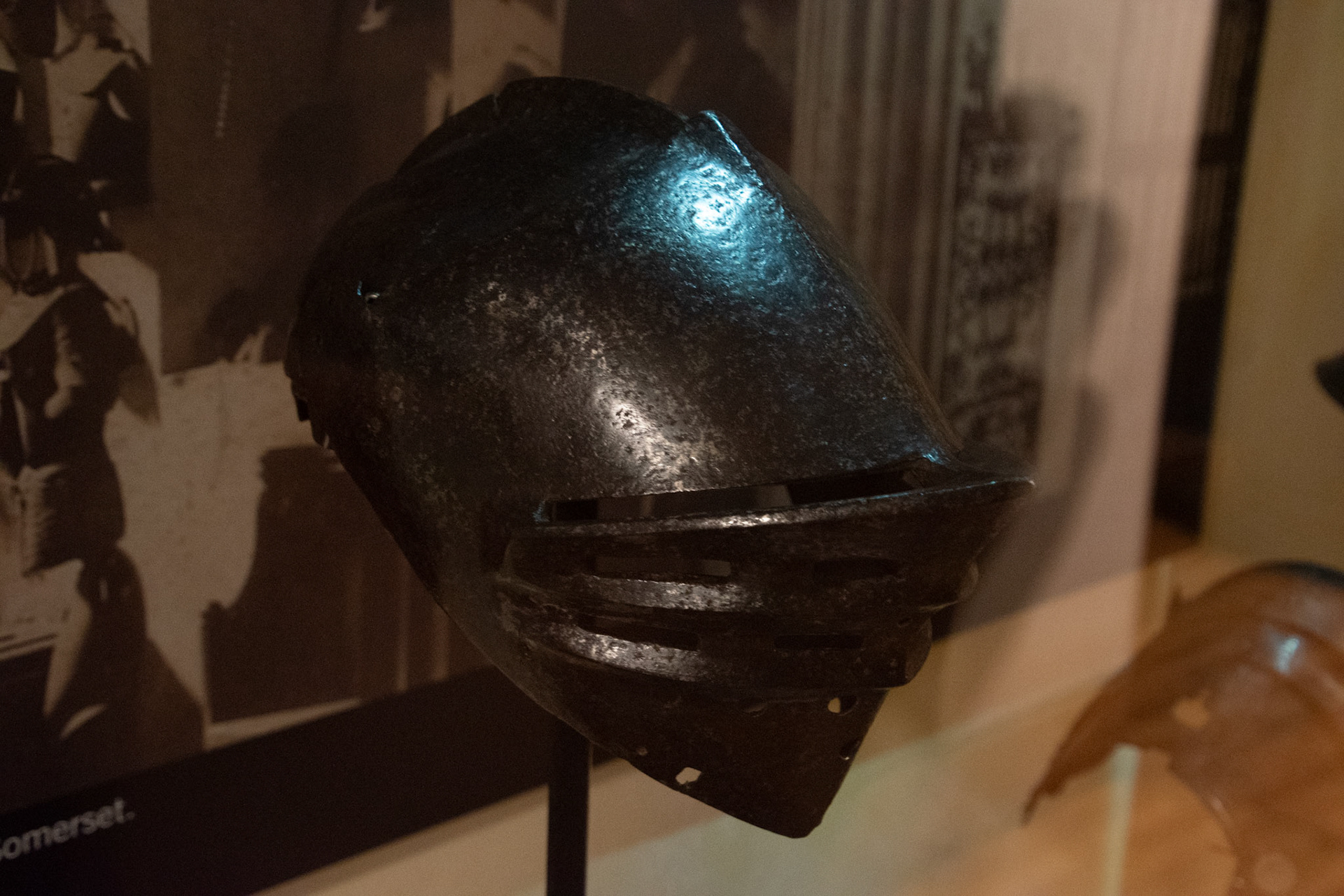
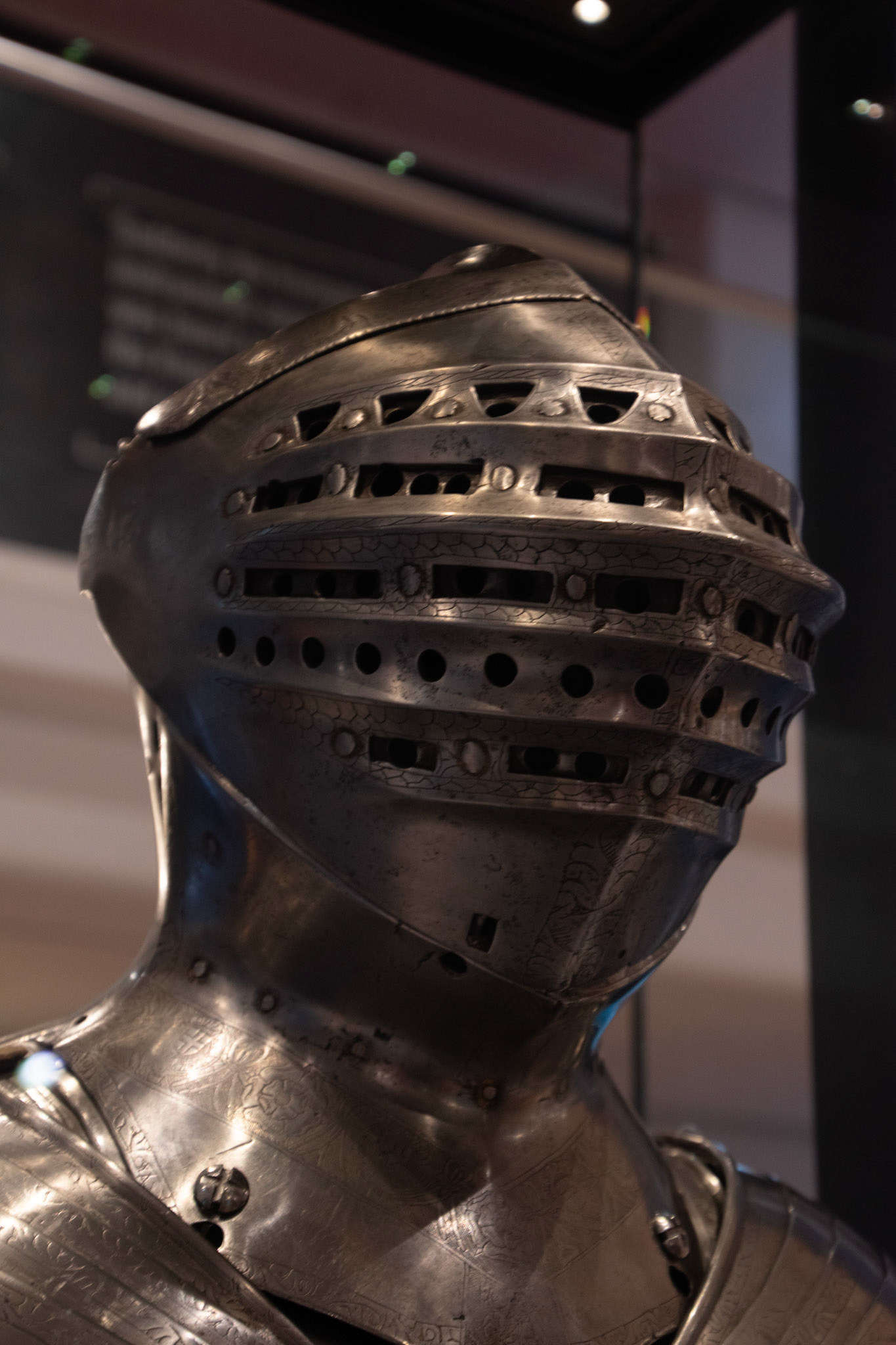
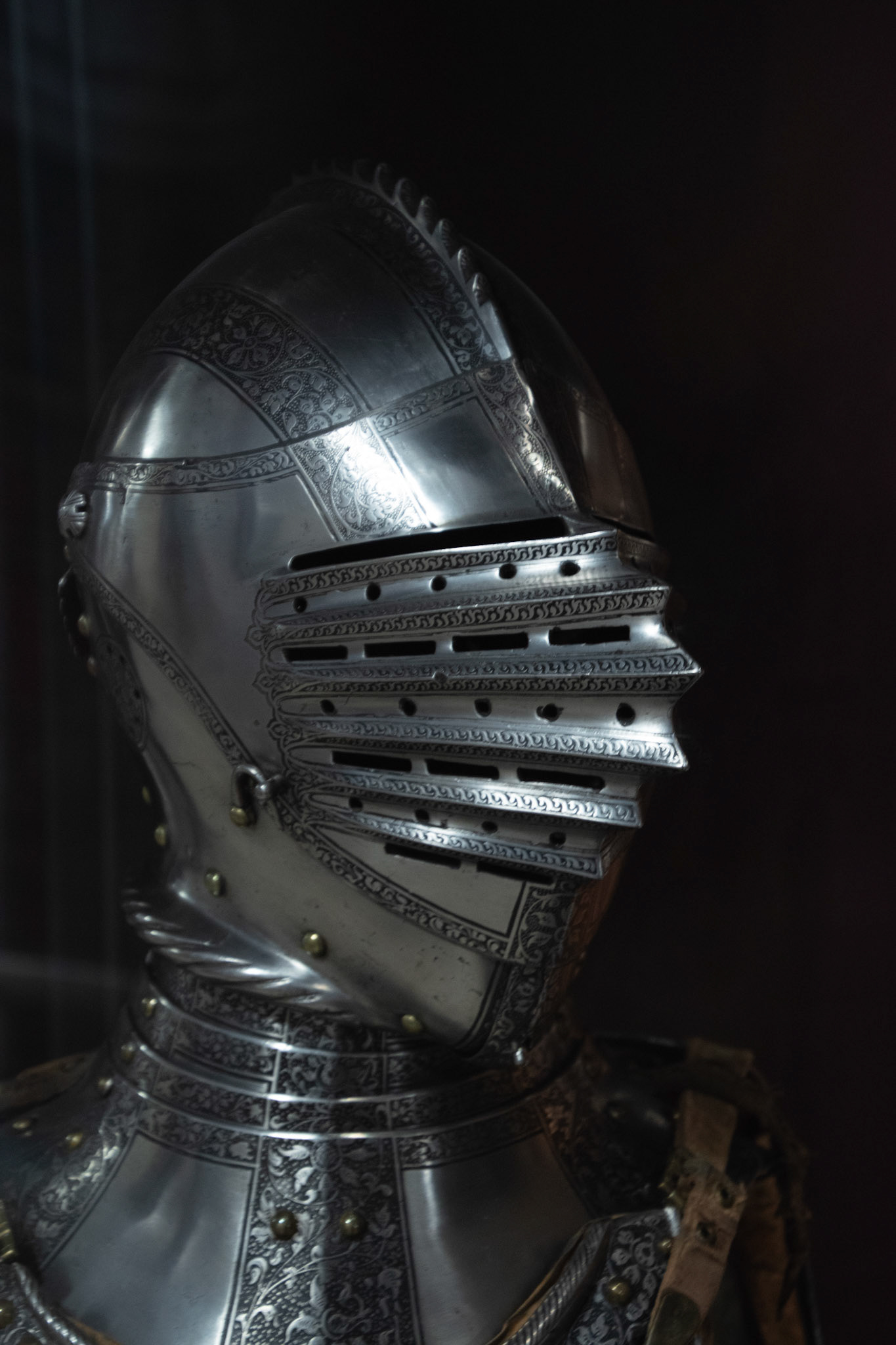
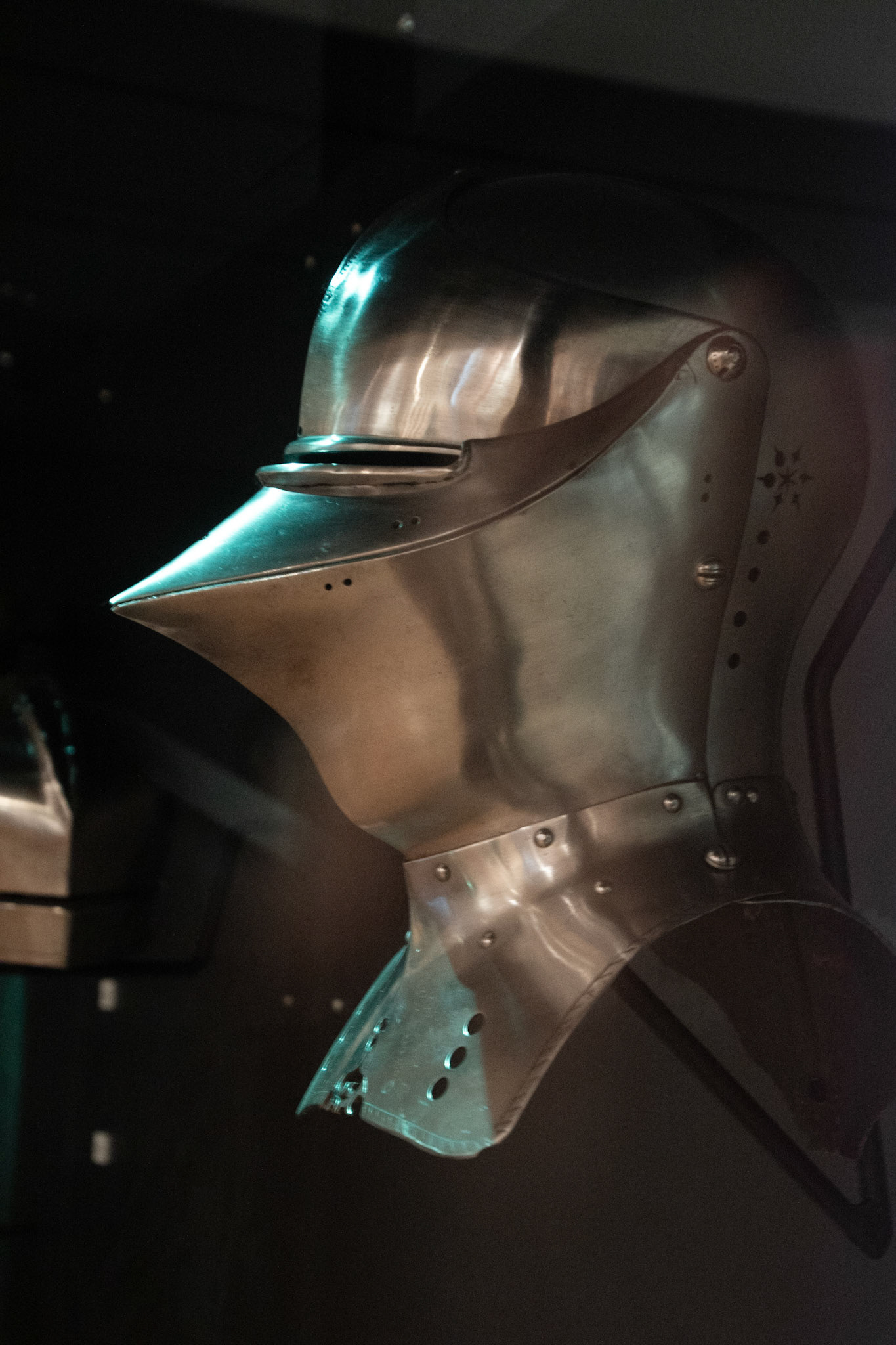

I explored the range of helmet designs, which changed dramatically throughout the Medieval period as styles shifted and technological advancements introduced new components. I found these helmets intriguing due to their large, bold forms, which dictated the overall design. I also found the varying styles of eye and breathing holes interesting, as their differences in form and layering created distinct aesthetics and functionality. These openings are the only exposed areas of the face, offering a glimpse of the wearer while the rest of the head is fully encapsulated in protective steel.
I thought the adjustable visor was an element worth exploring further, as it gives the wearer control over facial protection. I would like to experiment with ways to physically manipulate my own work and enhance the protective qualities of my pieces.
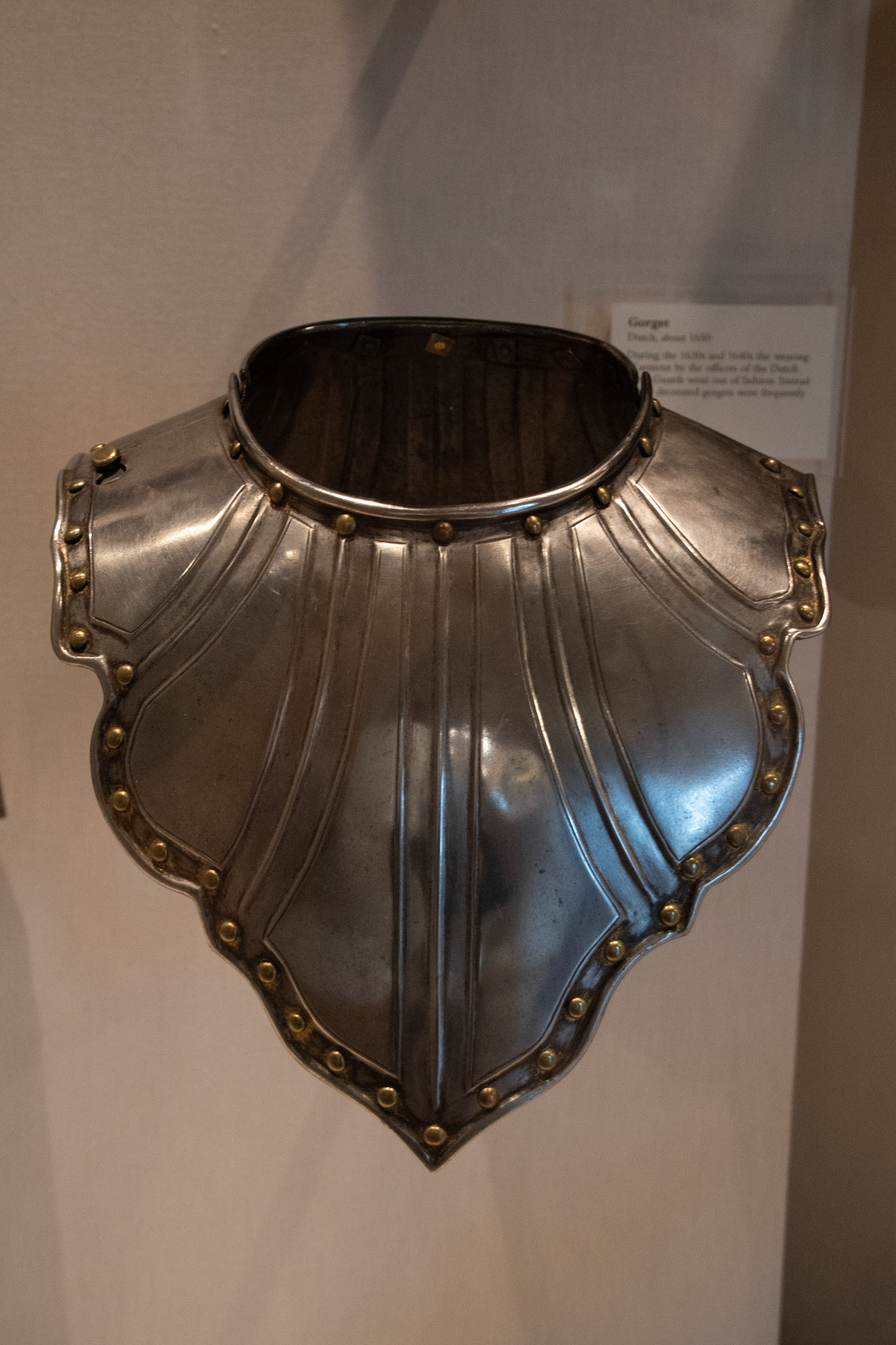

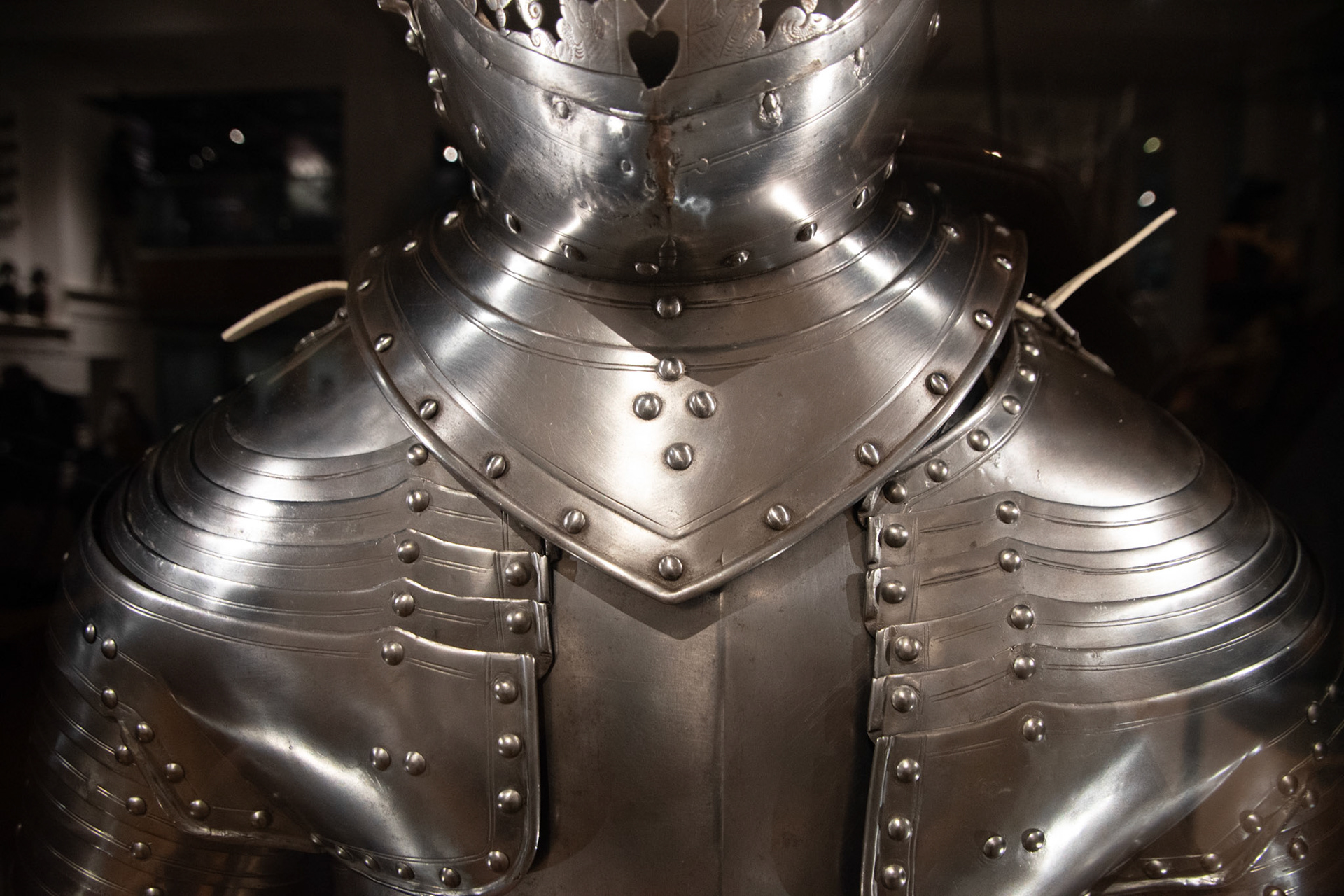
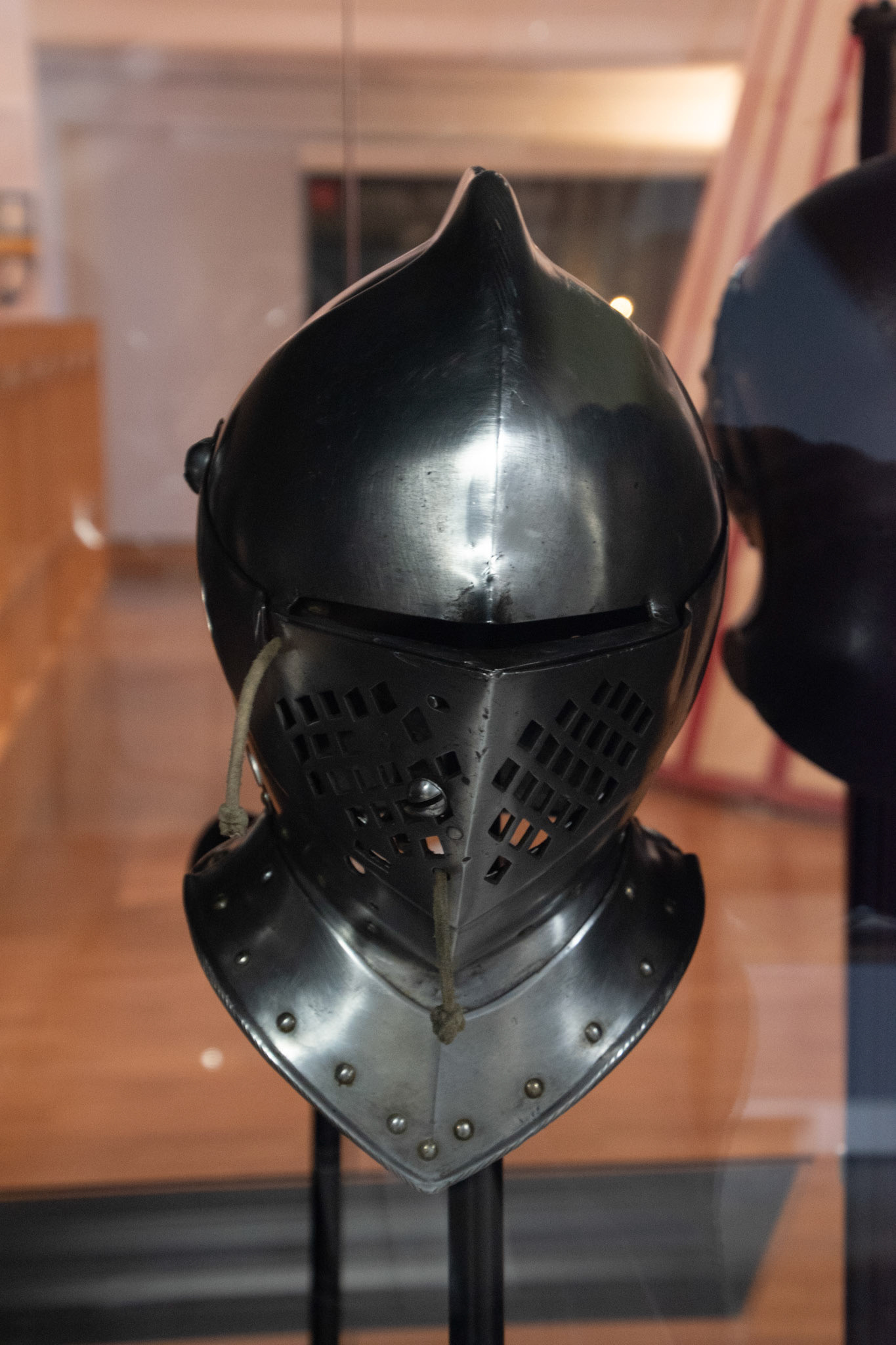
When looking at the neck protection I found the Shapes very powerful at drawing the eyes away from the throat. This was emphasised by the fluting and rivets that matched this flow.


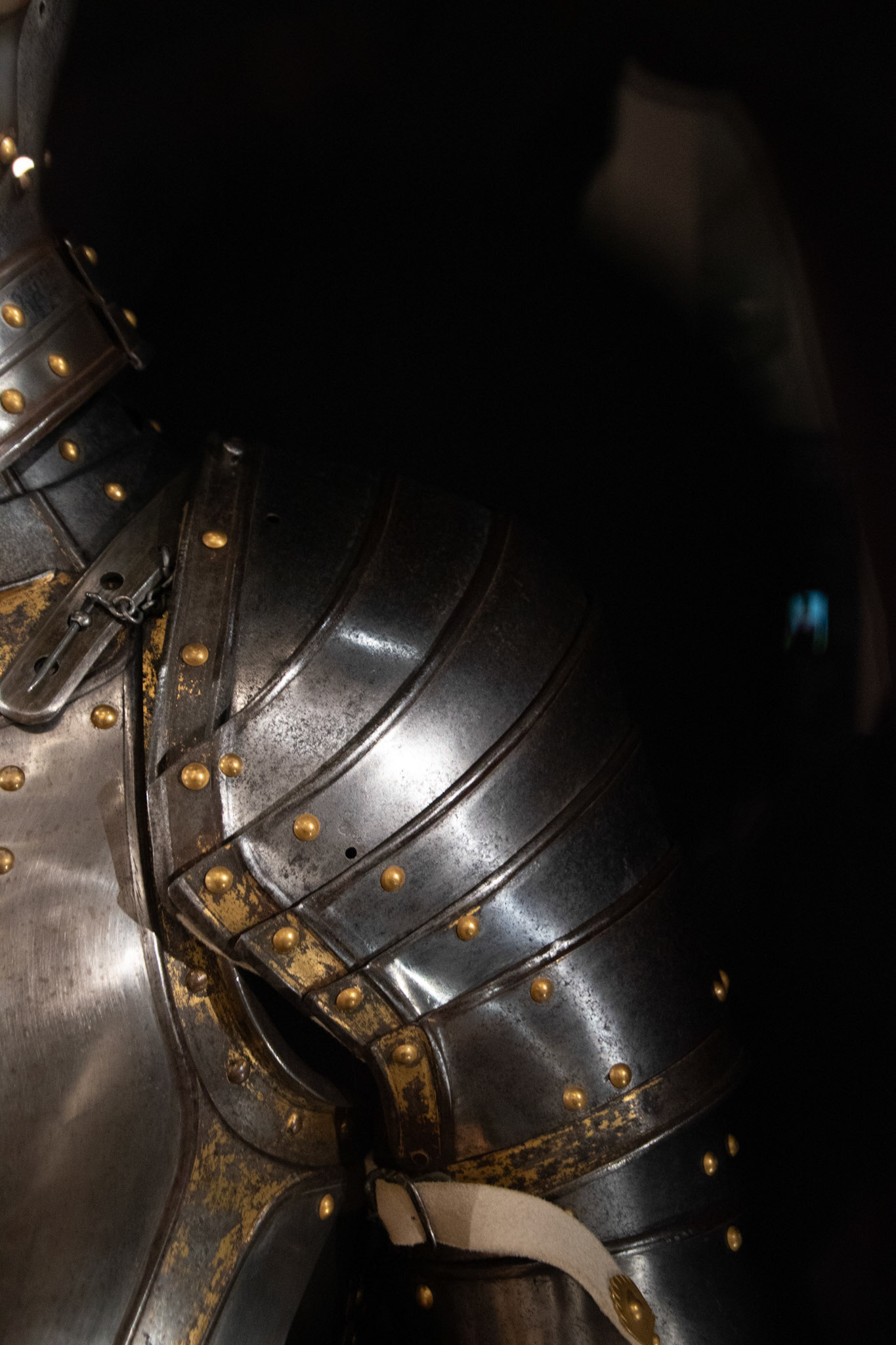
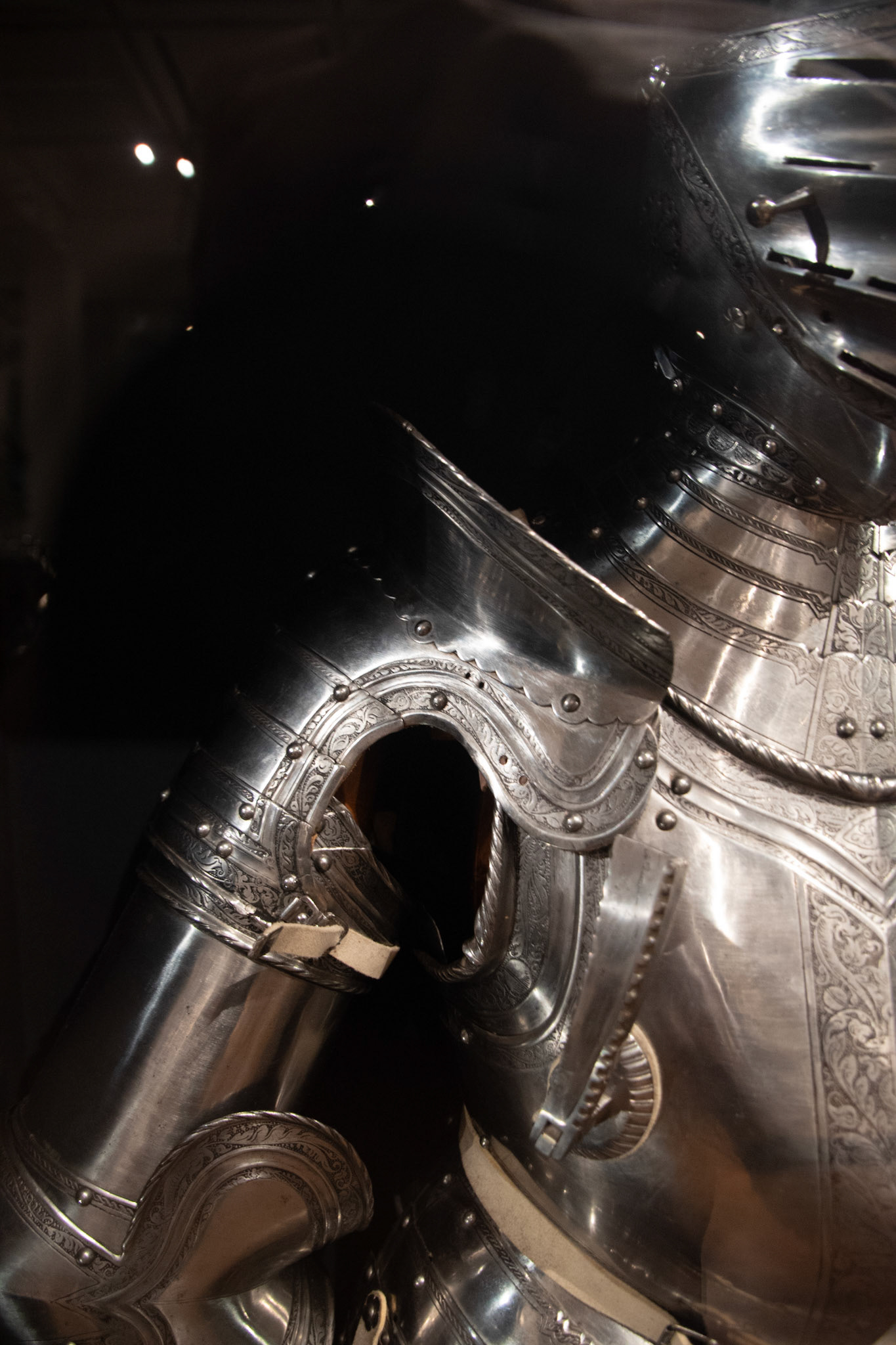
I liked the symmetry of the shoulders and arms, but I also found the occasional asymmetry powerful, as it provided additional protection for the warrior's dominant side. Looking through a contemporary lens this could also be seen as pulling the viewer attention to their comfortable and confident side. I was particularly drawn to the stacking and layering of armour, which enhanced mobility while also increasing coverage."
The Wallace Collection
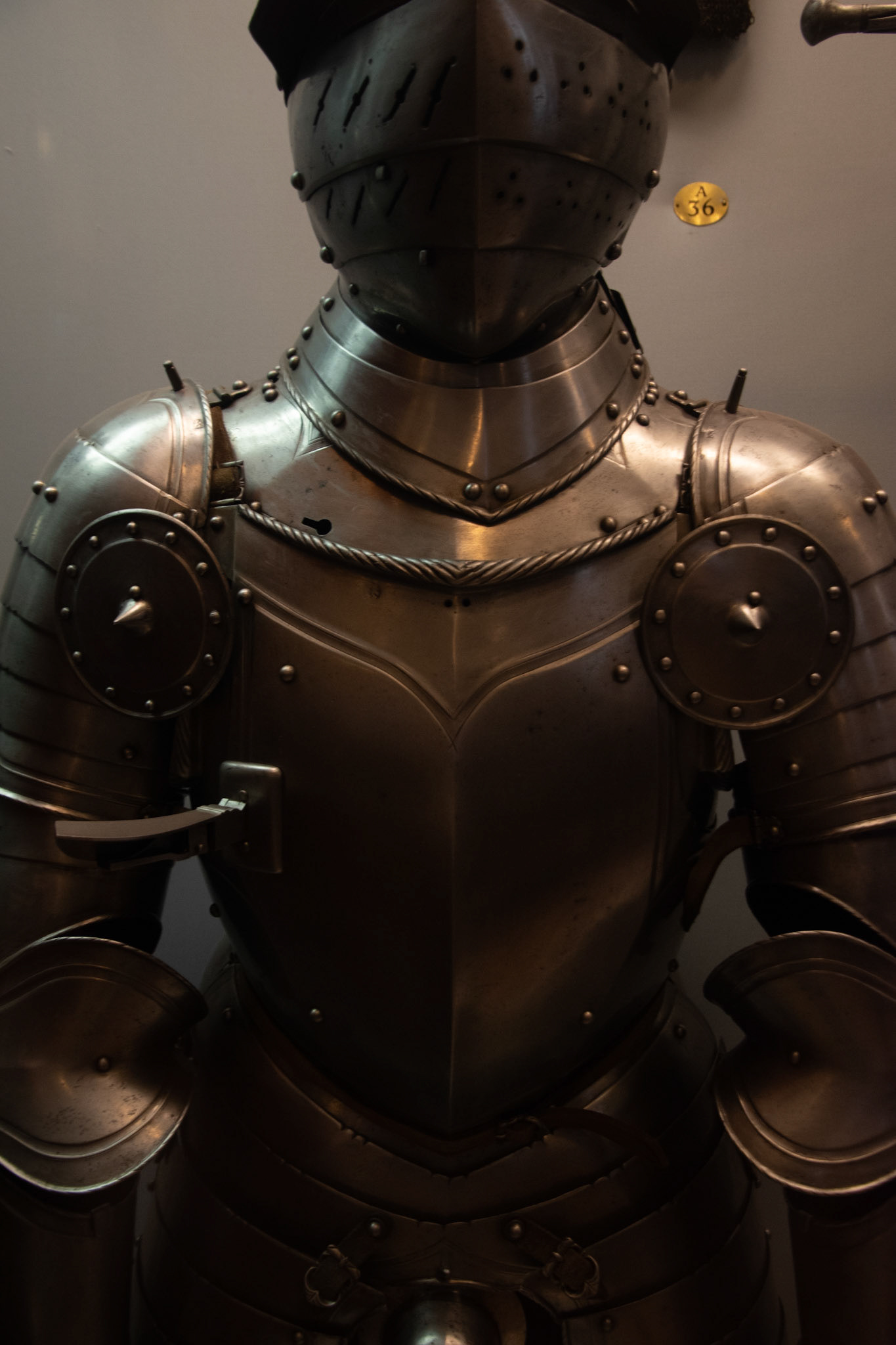

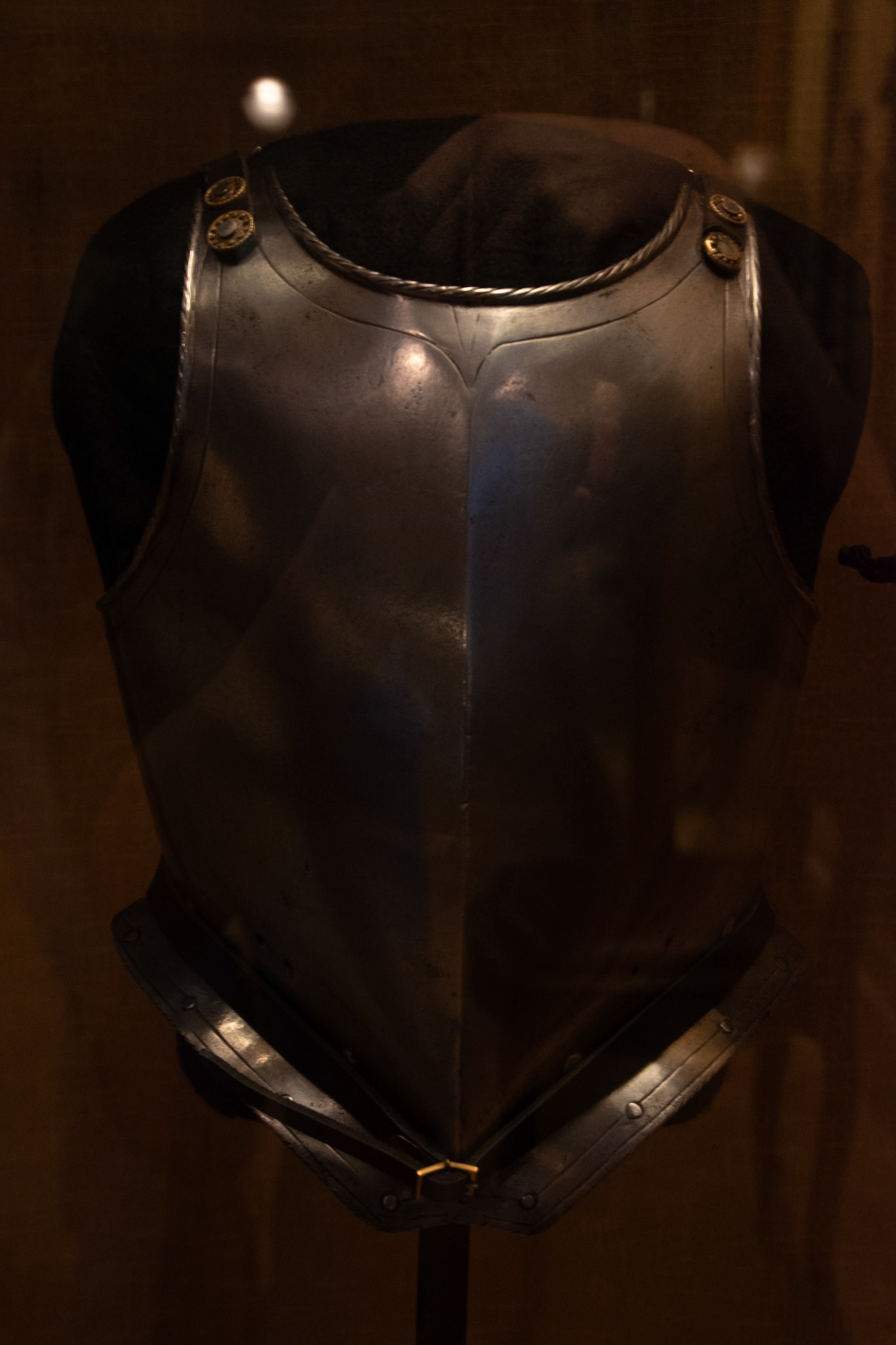
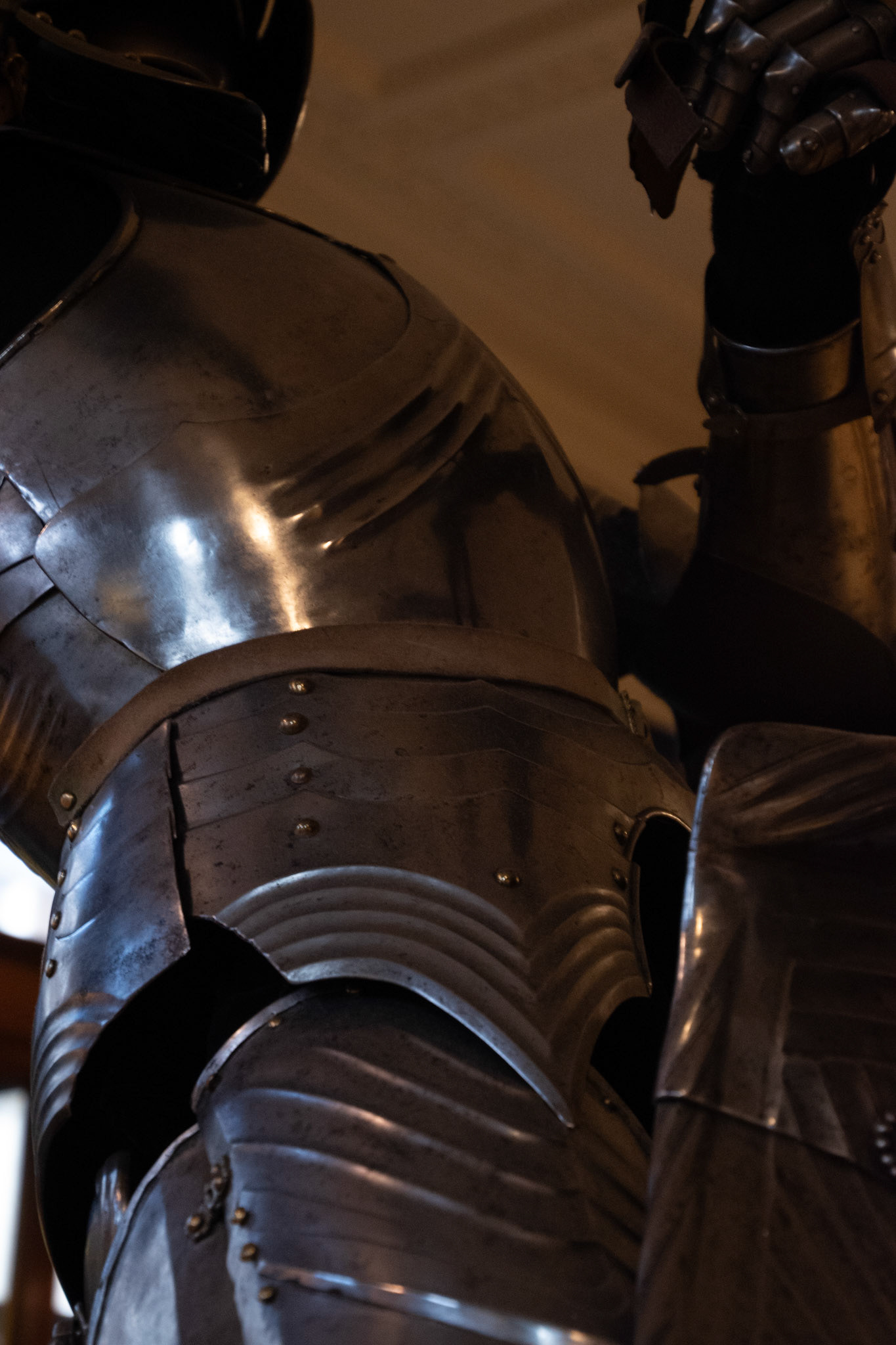
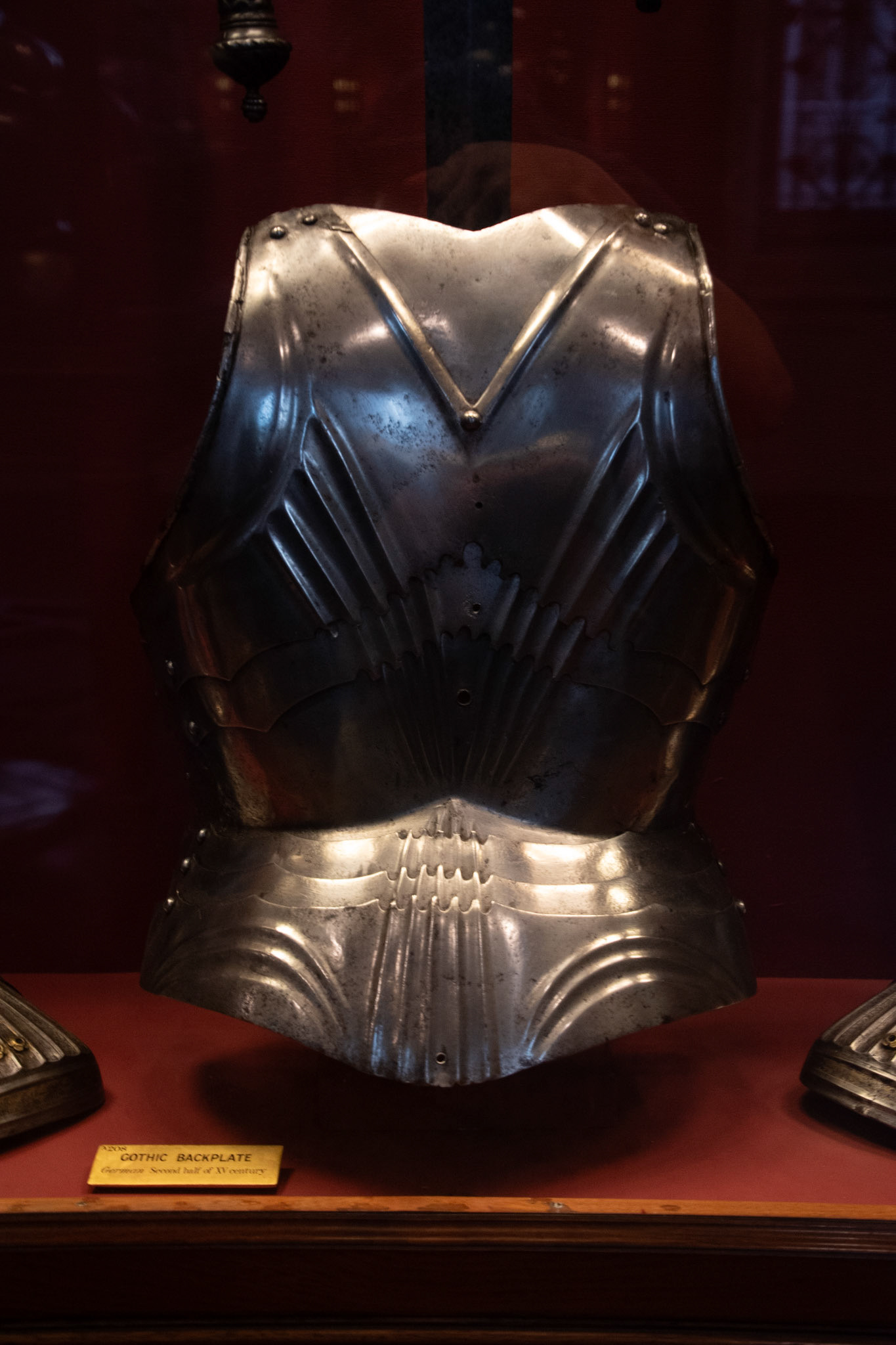
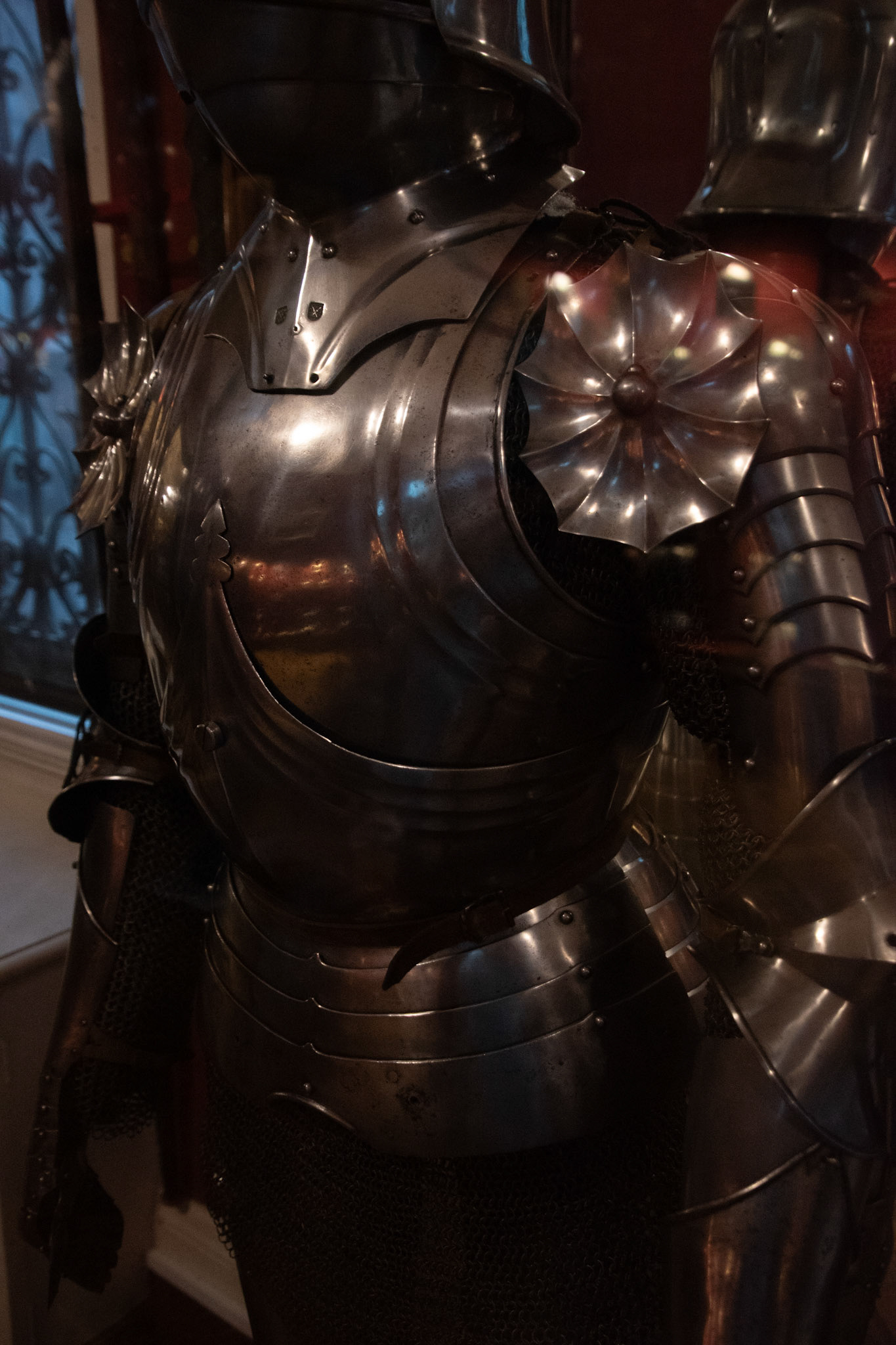
During my visit to the Wallace Collection, I focused primarily on unique and varied embellishments in the torso region. I liked the fluting that accentuates the body's curves. I was also fascinated by the range of forms and how the pieces were moulded to different body shapes.
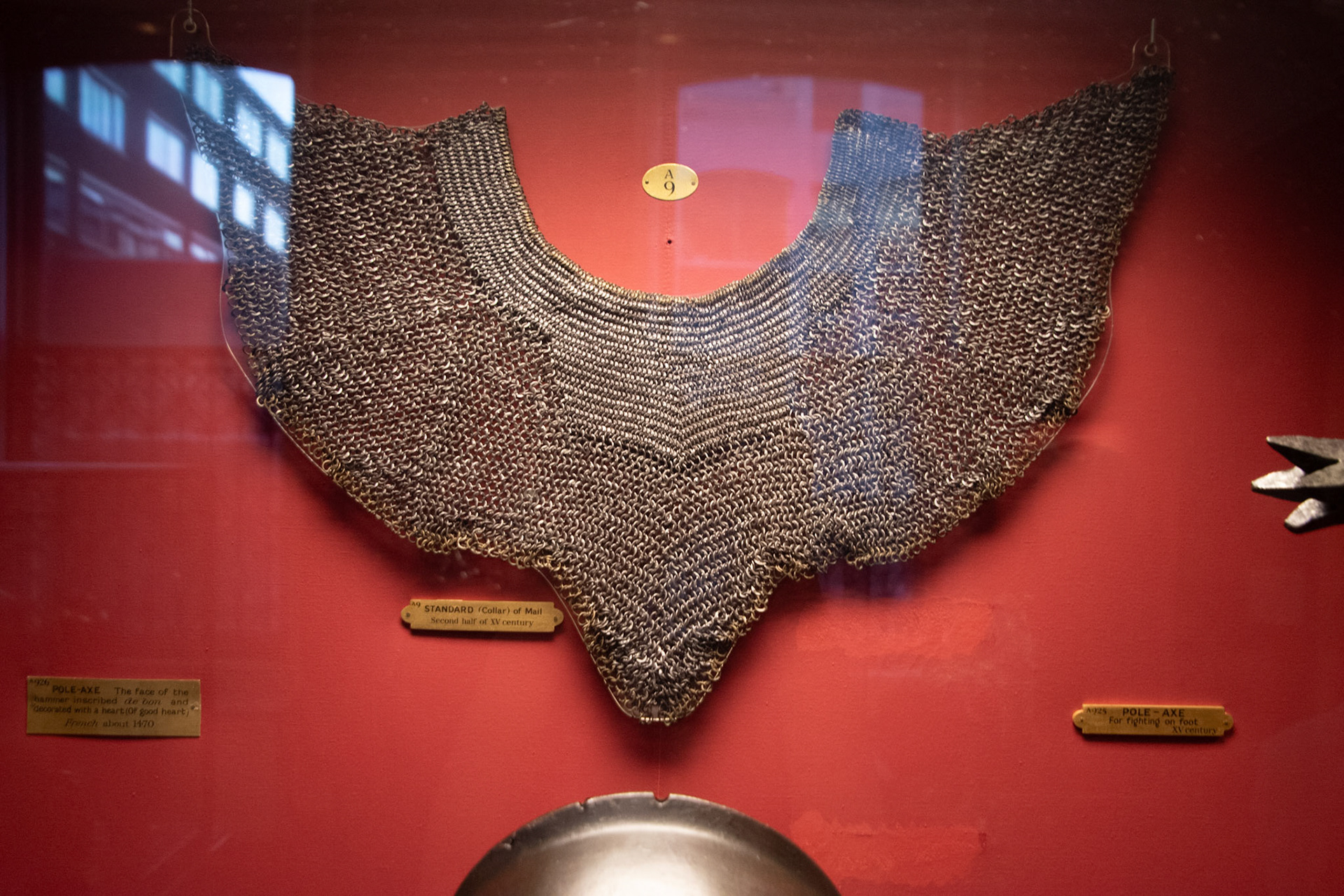
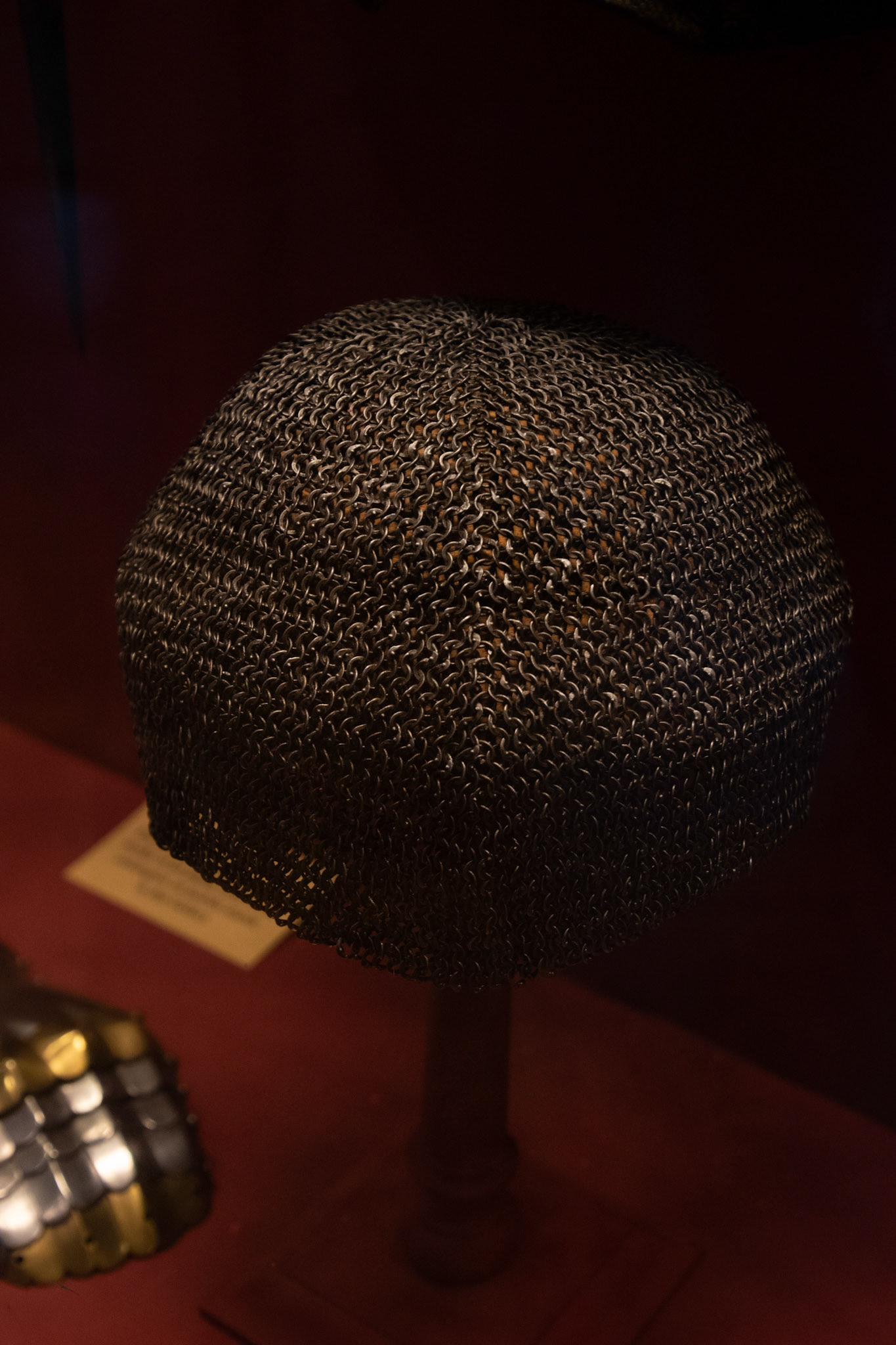
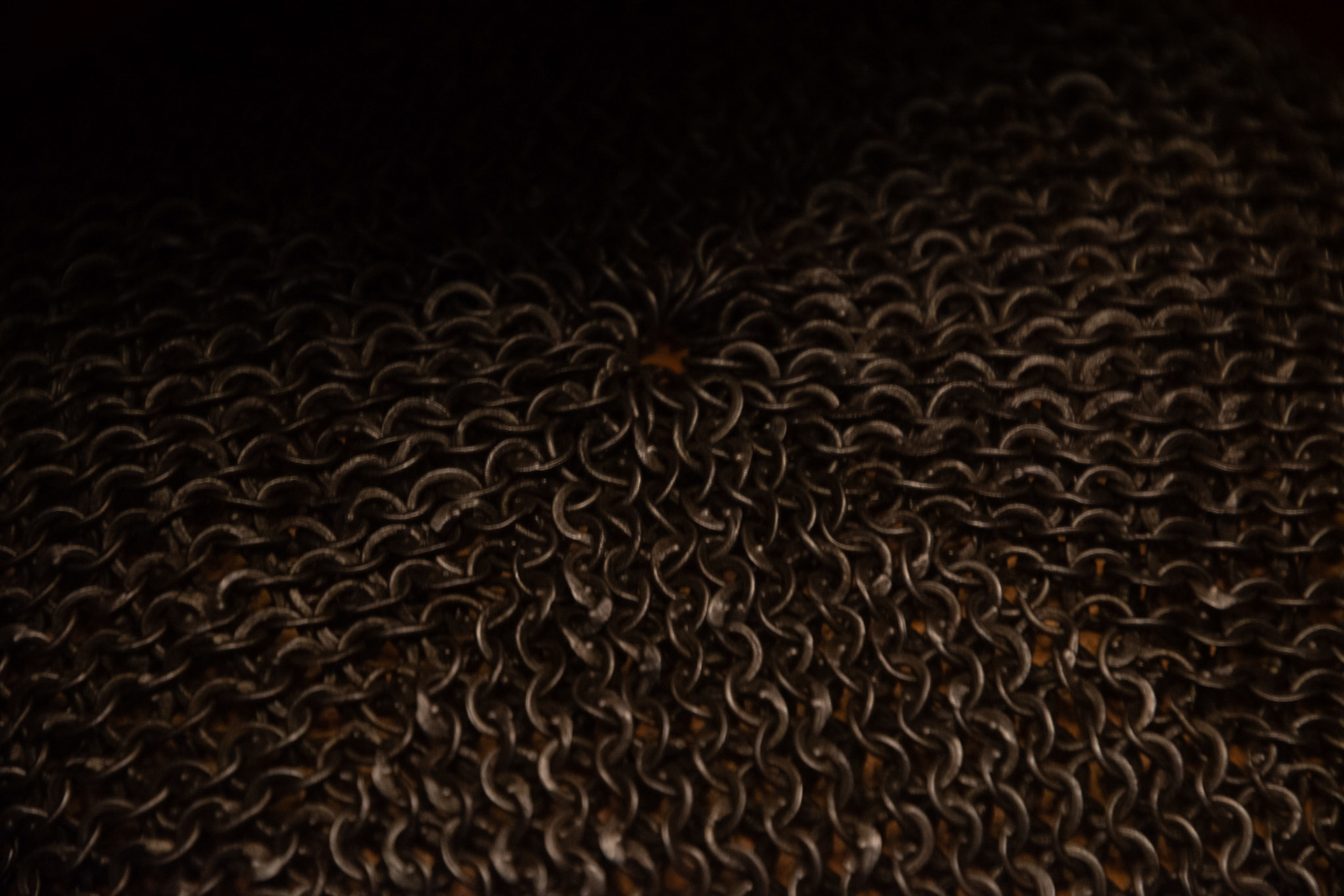
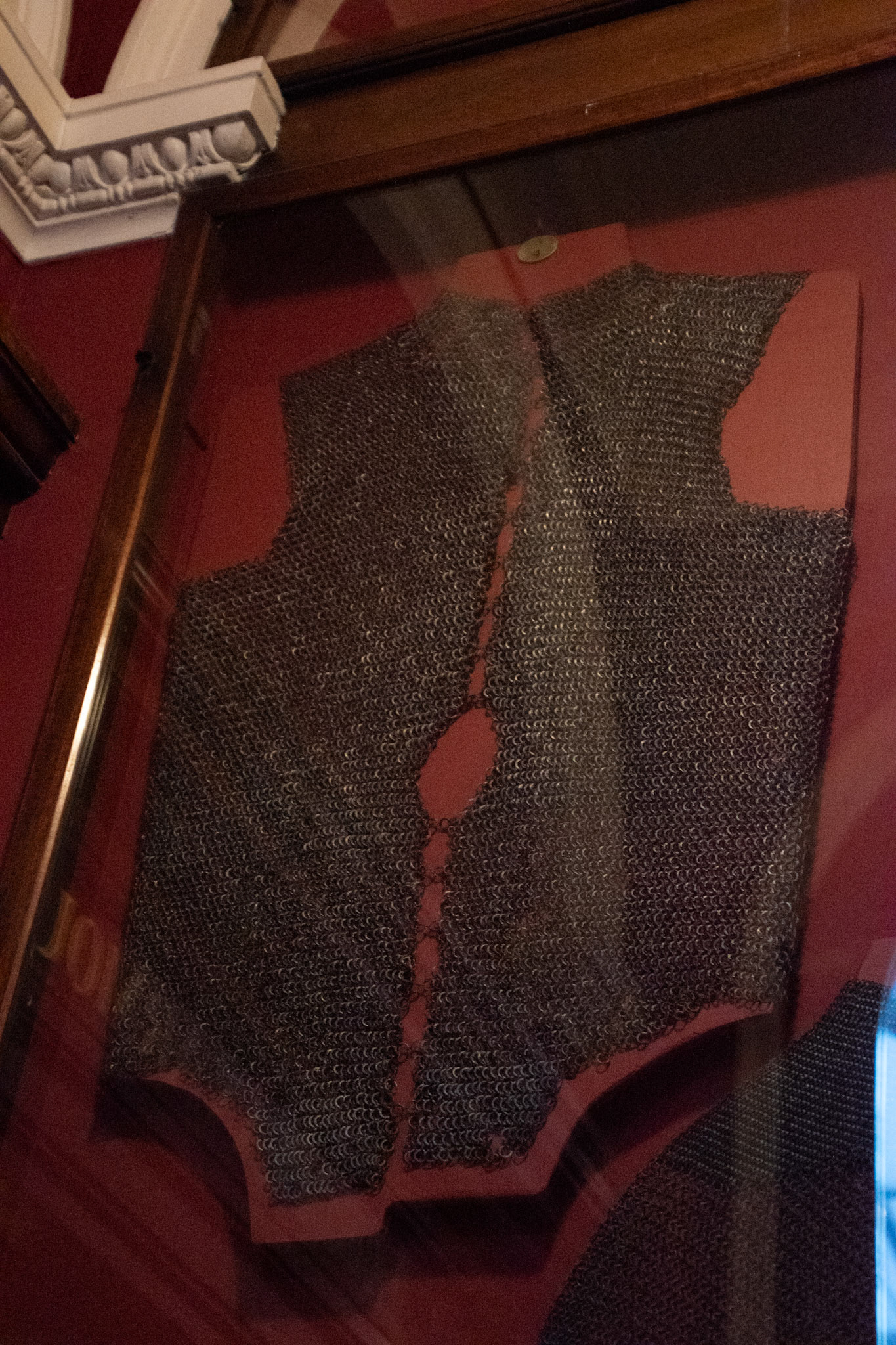
There were several pieces of mail on show, and I looked at how these were constructed. I found that the pieces were often constructed by weaving different sized triangular patches together to create a moulded form.
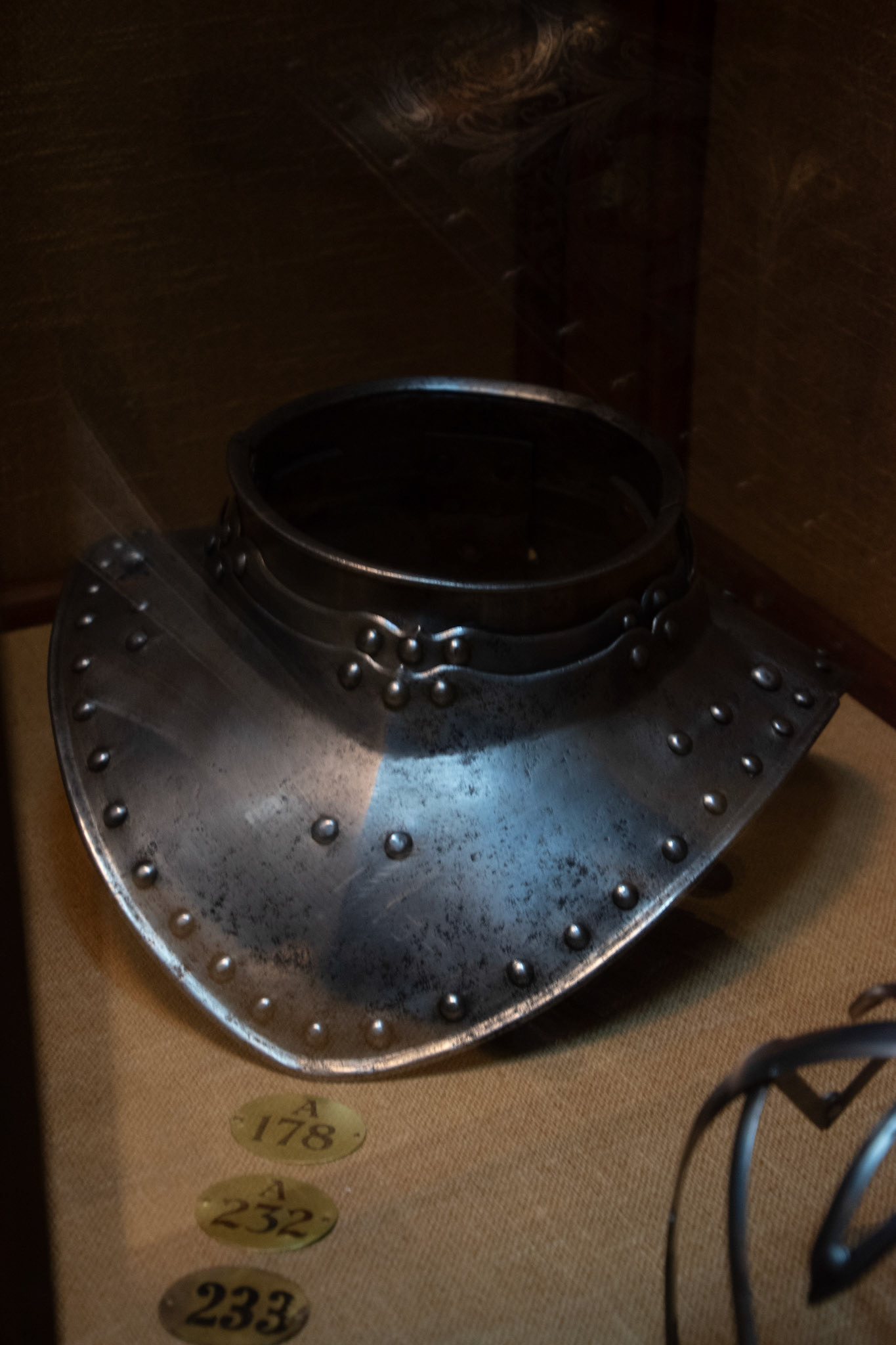


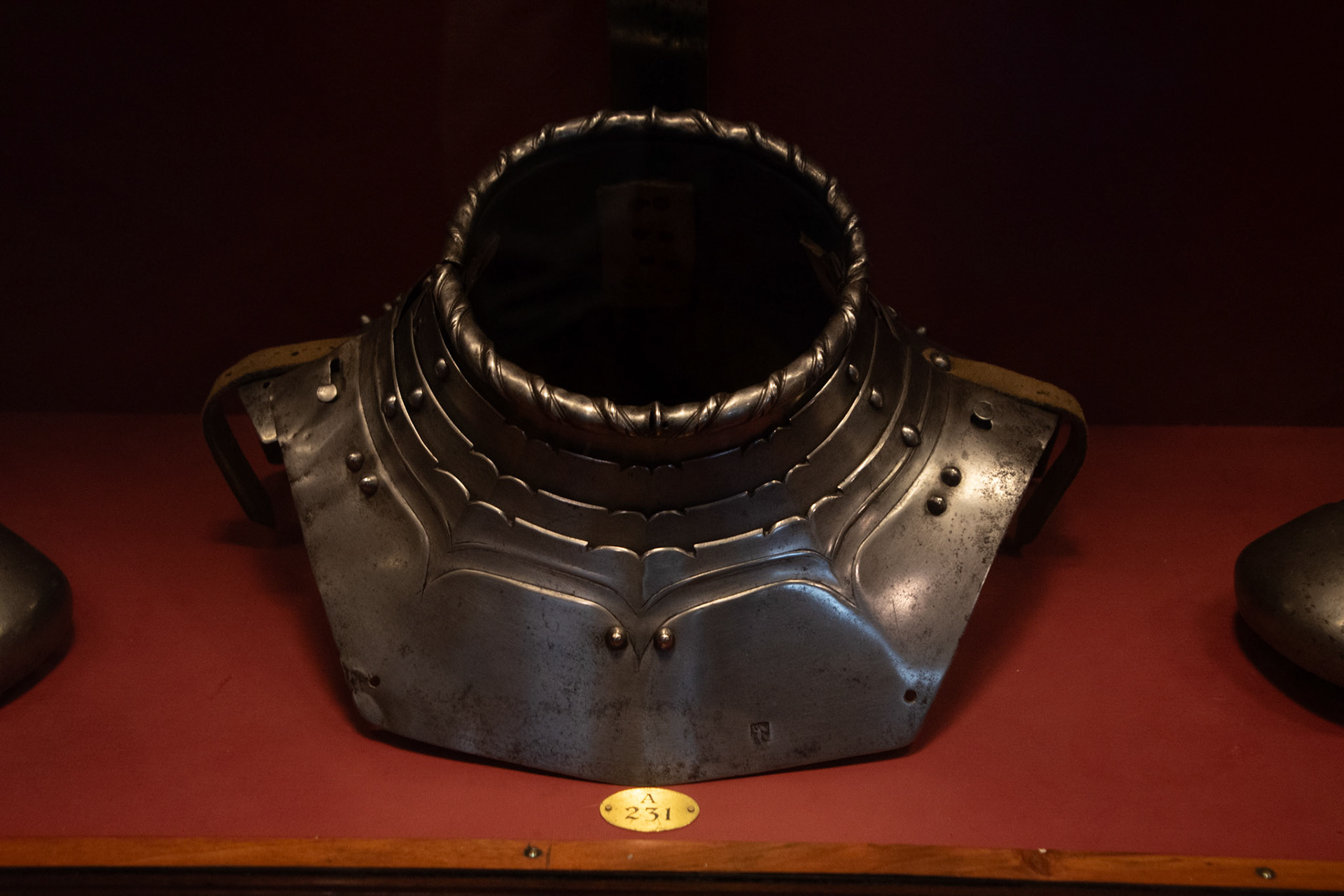
Finally, I examined how the neck was historically protected. I found that neck armour often extended down onto the chest, fully enclosing the wearer. I liked the layering over the neck, which provided additional protection while allowing for movement. I was particularly drawn to the embellishments of these pieces, rivets and engravings that radiate outward from the neck, almost visually dispersing harm.
